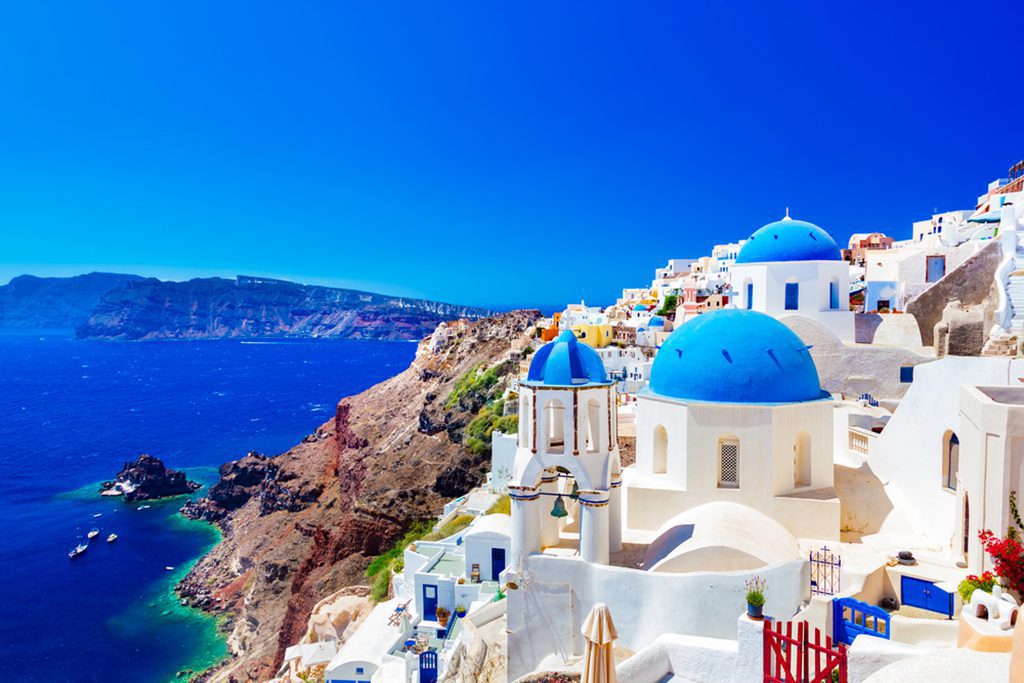Greece is a European gem and a beloved destination for tourists from all over the world. Its beautiful beaches, charming towns, welcoming people, mouthwatering food, and rich history make it a must-see. Greece is made up of a hilly mainland and numerous islands, each with its own distinct scenery, ancient landmarks, nightlife, and cultural attractions.
The adventure often begins on the mainland in Athens, one of the oldest cities in the world, renowned for its historical sites like the famous Parthenon. Beyond Athens, visitors can explore popular Greek islands such as Santorini, Crete, Corfu, Rhodes, and Mykonos, all with their own unique offerings.
Santorini, with its cliffside villages, spectacular sunsets, and awe-inspiring volcanic scenery, is a top choice for romantic getaways and weddings. Crete, the largest island, boasts a variety of accommodation options, from hotels and shops to restaurants and nightclubs, along with world-renowned archaeological sites like Knossos Palace. Corfu, rich in culture and history, features stunning beaches and both ancient and modern landmarks. Rhodes is a historical town lover’s paradise, while Mykonos is a partygoer’s dream island in the Aegean Sea.
Greece is a country of hundreds of islands, each with its unique character and flavor. Whether you are seeking relaxation on warm sandy beaches, gourmet cuisine, or thrilling adventures, you will find it all in Greece. Each island offers an authentic experience of the local lifestyle, with something for everyone, from nature enthusiasts to foodies to beach bums and more.
Experience Greece’s warm hospitality, breathtaking natural beauty, and fascinating history. Whether you’re a first-time traveler or a seasoned adventurer, Greece has something new to offer every time you visit.
43. Nisyros
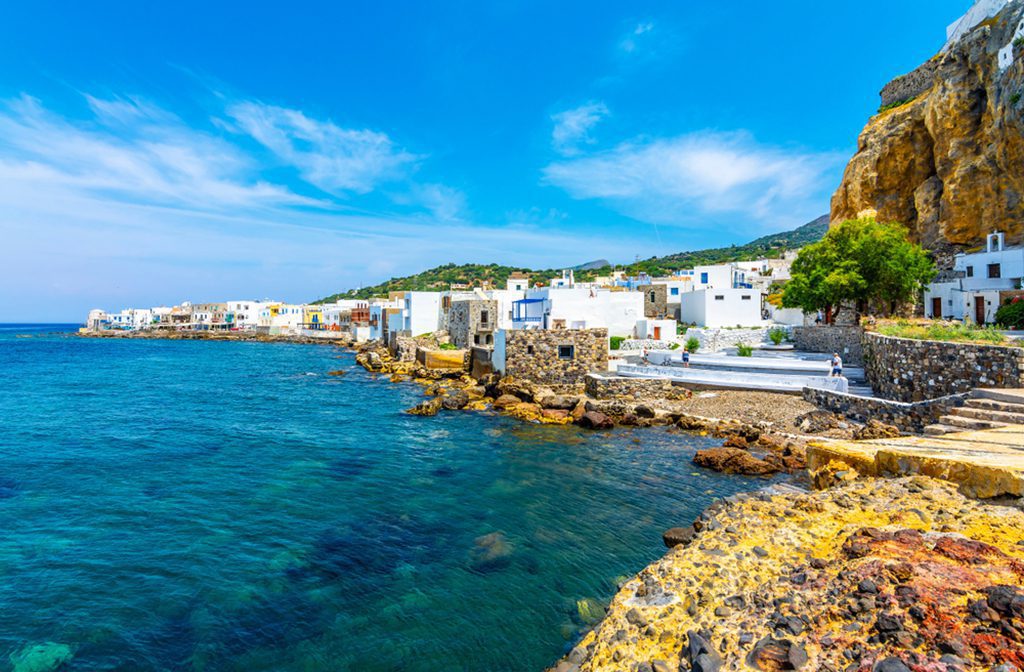
Nisyros, a Dodecanese island in the Aegean Sea, is a volcanic outcrop. Nisyros, a circular island between Kos and Tilos, is home to Greece’s youngest and most active volcano.
The fact that Nisyros is not a typical Greek island perhaps explains why it has not been overrun by tourists. Nisyros has a unique volcanic landscape, with black pebble beaches, hot springs, and hydrothermal craters to discover. For those seeking adventure, the island is replete with nearly 40 miles of hiking paths, some of which lead to the summit of the island’s active volcano.
Instead of being known for its beaches, the island has become famous for its picturesque towns and delicious Greek taverns. Cobblestone alleys, picturesque squares, and the Paleokastro acropolis can all be found in Mandraki, the primary fishing community. Indulge in the vibrant nightlife of Mikri Venetia (Little Venice), discover Nikia’s Porta plaza and Volcanology Museum, and spend some time in the mountain town of Emporio, home to the stronghold of Pantoniki and a natural volcanic sauna housed in a tiny cave.
42. Poros
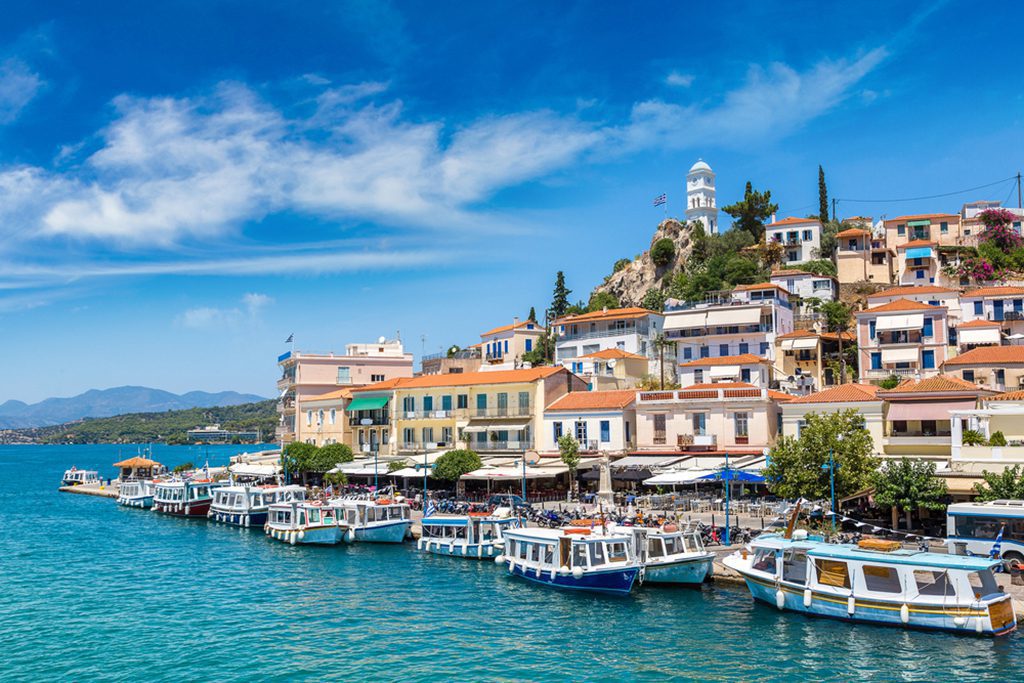
Located in the southern Saronic Gulf, Poros is a small island. Poros Town, the island’s capital, sits on a dormant volcano overlooking the Aegean Sea, while the rest of the island has been left undeveloped across a narrow canal. On the mainland side of the strait sits the town of Galatas, its twin.
Easily accessible from Athens by boat and with picturesque churches, monasteries, pine forests, and citrus fields, Poros is a favorite weekend getaway. Just take your time and wander the charming alleys of the town. The Archaeological Museum of Poros and the Poros Town Clock Tower are two of the town’s most notable landmarks.
The Holy Monastery of Zoodochos Pigi and the Sanctuary of Poseidon are just two of the many sights to see outside of Poros Town and across the untamed island. Love Bay, Vagionia Bay, and Askeli Beach are just a few of the fantastic locations where you can spend your days participating in a wide variety of water sports.
41. Serifos
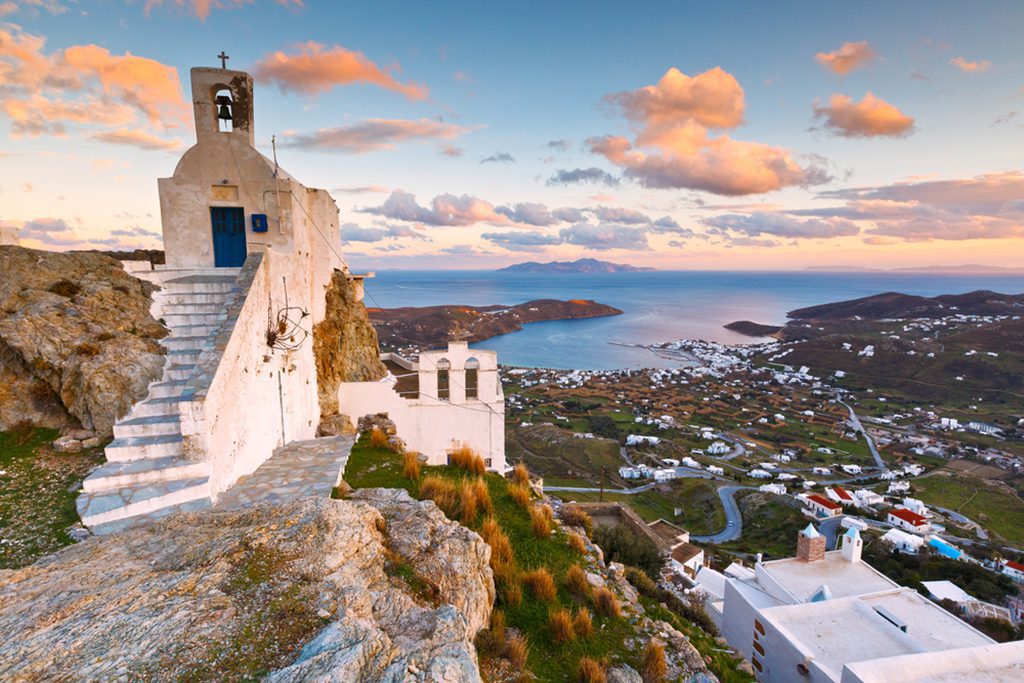
Located in the western Cyclades, Serifos is a small island that offers all the benefits of a rural Greek vacation without the tourist hordes: undeveloped, quiet beaches; wonderful walking paths; and top-notch tavernas. And the scenery is stunning. On a desolate hillside to the rocky shoreline below are strewn hundreds of Greek Orthodox churches, antique monasteries, and Cycladic structures.
Serifos was formerly a thriving mining center, but now all that remains are the city’s hilltop location and a few abandoned mining roads. Ascend to Hora (Greek for “major town”) for a breathtaking panorama of this relatively undeveloped island.
Take a trip along the Serifos mining path to see abandoned mines, caverns, and bridges, as well as a museum dedicated to the industry located in the nearby hamlet of Megalo Livadi. Take a stroll around the scenic Serifos port, people-watch in Pano Piatsa, and refuel at a local restaurant near Mega Livadi beach.
40. Spetses
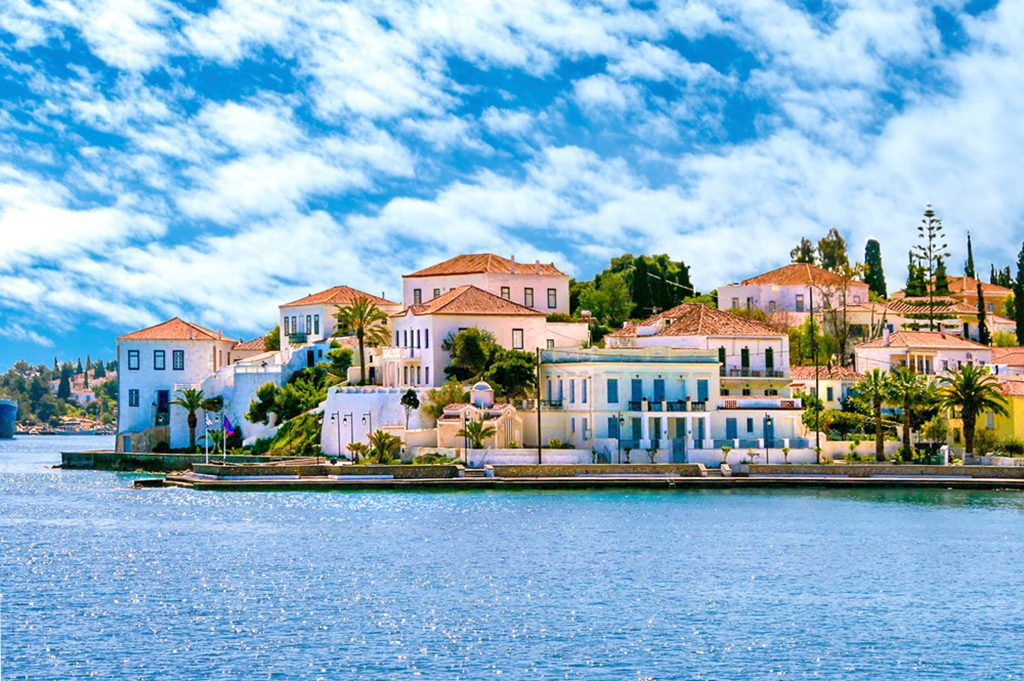
Spetses consists of a single old town nestled among rolling hills and an abundance of pine trees, earning it the other name, Pitioussa (meaning “pine-filled”). Yachties from all over the globe go there because of the fantastic restaurants, attractive ancient port, variety of little beaches, and lively nightlife that can be reached in about two hours by ferry from Athens.
The island’s main settlement, Spetses, is reminiscent of a bygone era with its winding, cobblestone lanes, horse-drawn carriages, and Venetian-style homes. During the Greek Revolution of 1821, Spetses was the first island in the Argosaronic Gulf to hoist the flag of freedom from Greece.
The harborside Poseidon Square has a statue of Laskarina Bouboulina, a hero of the Greek War of Independence. Her previous residence in the area is now a museum dedicated to her work. Other historical sites include the War Memorial of the Spetses Navy, the medieval shipyards in the old port, and Navy Park.
The Armata is a celebration celebrated annually in September to honor the Greeks’ triumph in their war for independence from Ottoman rule. After learning as much as you can about Spetses’ past, treat yourself to some of the island’s Amigdalota—almond sweets—at one of the many pastry shops near the new port of Dapia.
39. Kalymnos
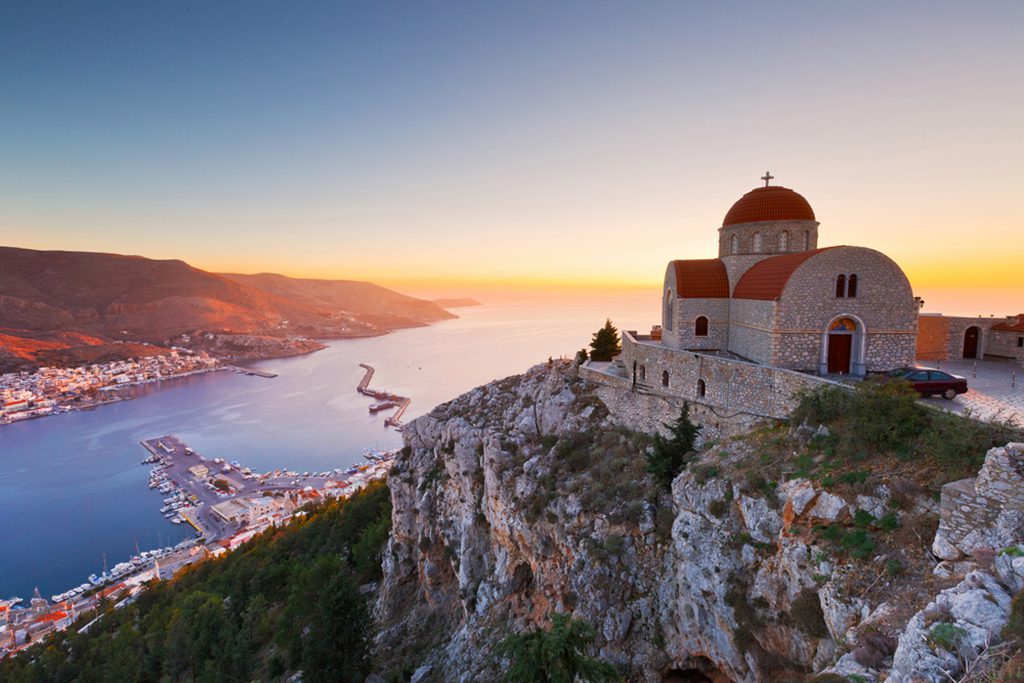
Located in the Aegean Sea not far from Turkey’s shore, Kalymnos is one of the Dodecanese islands. The island’s attractions range from breathtaking landscapes and medieval castles to beautiful beaches, delicious food and ancient ruins. However, rock climbing and scuba diving are the main attractions of Kalymnos, so the island is best suited to adventurous tourists.
Location-wise, flying from Athens to Kalymnos is your best bet. Kalymnos has some of Europe’s most stunning rock faces thanks to its rugged environment interspersed with olive trees. This island has become a famous climbing destination because of its 60+ rock climbing routes.
Kalymnos also has a thriving diving community. In fact, it is the annual site of the International Diving Festival. For hundreds of years, Kalymnos has been known as the “Island of the Sponge Divers” due to its long history of sponge production. Relax and enjoy the stunning marine life that surrounds Kalymnos as you dive at locations like Nera, Platy, Telendos, the adjacent island of Pserimos, and the Myrties-Telendos sea channel.
Pothia, the island’s main harbor is where you’ll find the island’s ancient sponge museum as well as the Byzantine Chora Castle, which dates back to the 14th century and has 4th century BC ruins.
38. Lemnos
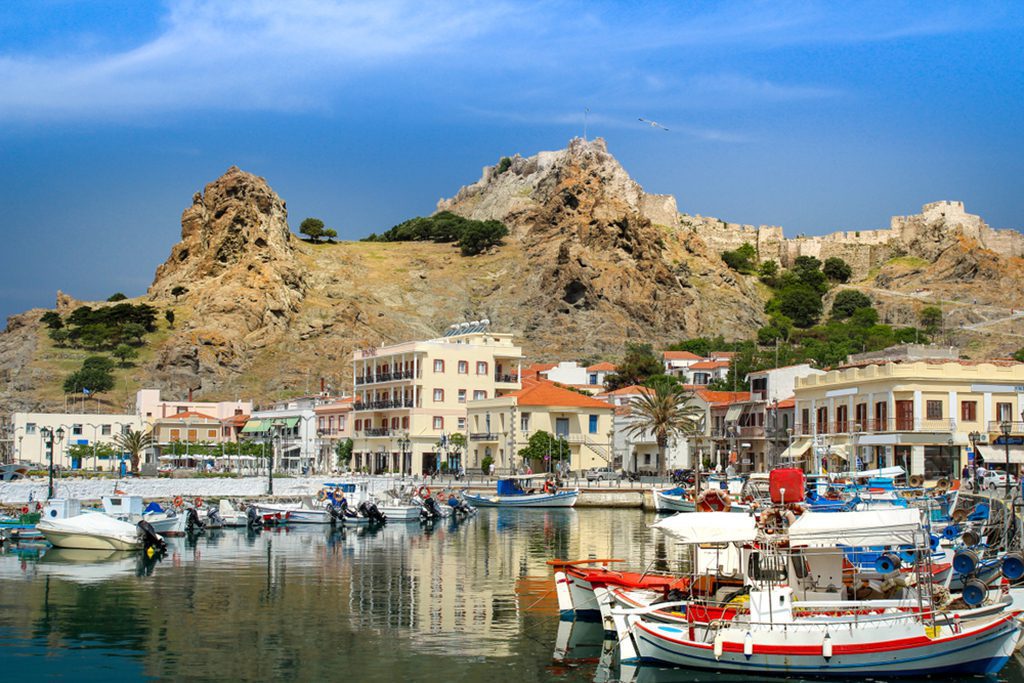
The island of Lemnos (sometimes spelled Limnos) is a significant geographical feature in the North Aegean. Dramatic waterfalls, magnificent sea caves, sandy beaches, and even a desert in the interior near Katalakkos make this island one of Greece’s best-kept secrets.
The island’s capital, Myrina, consists of two bays divided by the Byzantine Fortification of Myrina, a medieval castle. Ifestia (or Hephaistia) is another ancient site with historical attractions such as a cemetery, old baths, a Hellenistic theater, and the ruins of an ancient castle.
Guests are drawn to Lemnos by the island’s natural beauty as well as its rich historical heritage. Active vacationers will find paradise on this island. Enjoy rock climbing, diving, kite surfing, windsurfing, and trekking, notably through the Petrified Forest near the town of Moudros and the waterfalls near the hamlet of Káspakas, as you make your way down its string of sandy beaches, some of which have been awarded the Blue Flag.
37. Samothrace
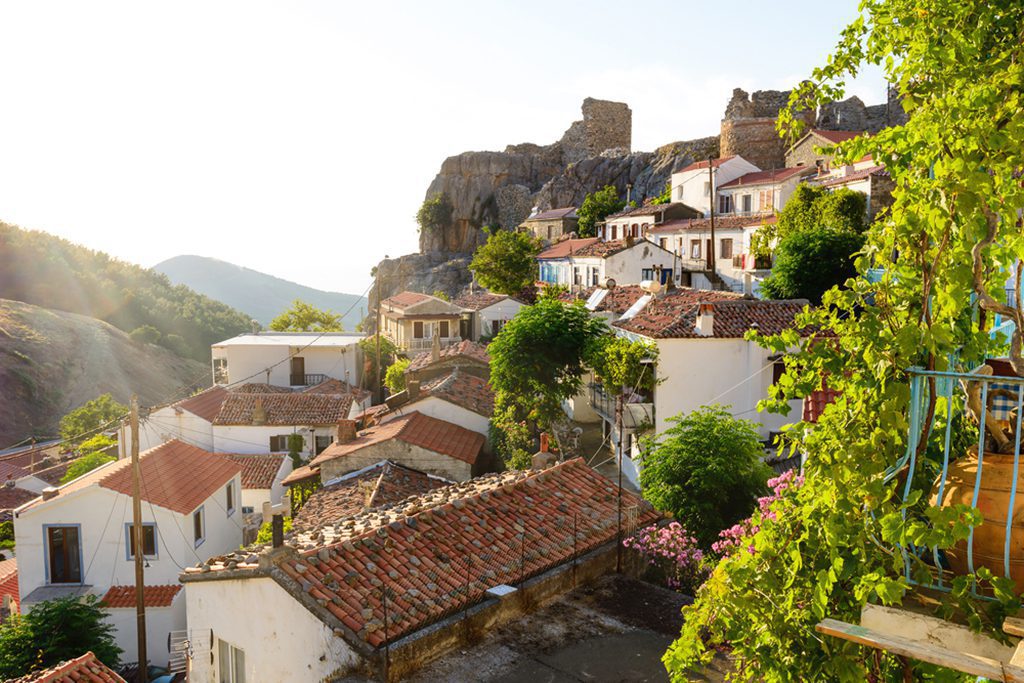
The island of Samothrace (or Samothraki) is located in the North Aegean Sea, not too far from the coast of Turkey. The waterfalls, beaches, basilicas, medieval castles, mineral springs, and pebbled beaches give this island a relaxing atmosphere.
Besides its large number of goats and the stunning granite cliffs of Mount Fengari, the island is famous for the Nike of Samothrace, which is currently housed in the Louvre in Paris. Many copies of this enormous statue honoring the Greek goddess of victory, who is known as “the Winged Victory,” can be seen all over the world.
Whether you’re looking for a relaxing vacation or an action-packed getaway, Samothrace has it all. Climb one of the Aegean’s tallest peaks, Mount Fengani, or Saos, see the picturesque fishing town of Kamariotissa, learn about the island’s history at the folklore museum and fort remains in Hora, and soak in the healing waters of Therma.
The island also has the Ancient Museum and the Sanctuary of the Great Gods, one of the most beautiful archaeological sites in all of Greece.
36. Kea

A member of the Cyclades group of islands in the Aegean Sea. Kea is also known by its Greek name, Tzia. As it is the island nearest to Athens, it is sometimes overlooked by international visitors, yet it is a beautiful and genuine vacation destination nevertheless. Rather, it’s a favorite weekend getaway for the wealthy Greeks who have second homes here.
Kea is an example of a Cycladic island. However, it does not have the usual scenery or architecture of the Cyclades, such as whitewashed dwellings or blue-domed churches. Instead, it has beautiful peach-colored stone buildings set among olive gardens, oak woodlands, and almond orchards.
The greatest oak woodland in the Cyclades may be found on the island of Kea. Approximately sixty percent of the island’s woods are protected from logging thanks to the Natura network, making it a prime location for birdwatchers. It’s also a fantastic place to go hiking; there are a number of well-marked trails around the area, including the Old Lion Trail, which is a particular favorite.
The island’s capital, Ioulis, is in the very center, just where the ancient city-state of the same name previously stood. Having maintained its historic integrity while modernizing its architecture (including its tiled roofs, cobblestone streets, and picturesque squares), this little town is now a tourist hotspot.
35. Evia
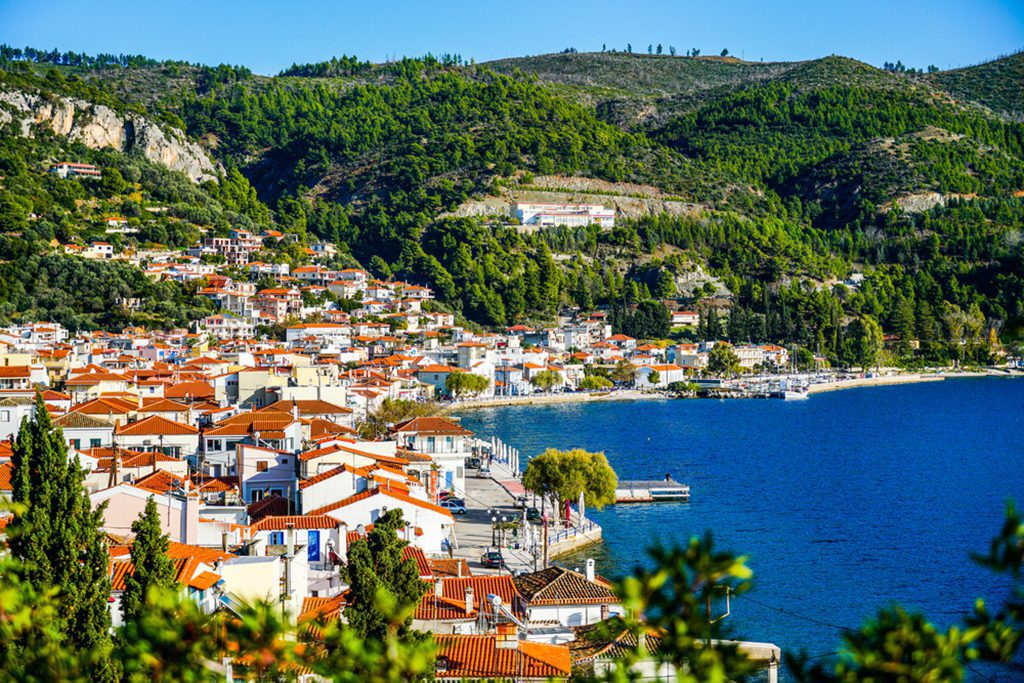
Located in the middle of the Aegean Sea, Evia (or Euboia) is the second biggest island in Greece and is connected to the mainland by two bridges, the most remarkable of which is the Chalkida Bridge. Despite being one of the closest islands to Athens, Evia is mostly ignored by visitors. However, the island is popular amongst residents and those in the know due to its wine, ancient ruins, and artisanal goods.
Gorgeous landscapes, quite different from the more populated Greek islands nearby. The interior is a blend of rivers, woods, and streams, while the coasts are a mix of rivers, forests, and wetlands. The east coast is known for its beautiful, uncrowded beaches and coves.
Evia has a lot to offer in the way of sightseeing, including several waterfalls, ancient ruins, and religious buildings. Stop by the Edipsos hot springs, stroll along the picturesque seaside promenades of Chalkida, the island capital, and see the ruins of Ancient Eretria in central Evia, home to the Archaeological Museum.
34. Alonissos
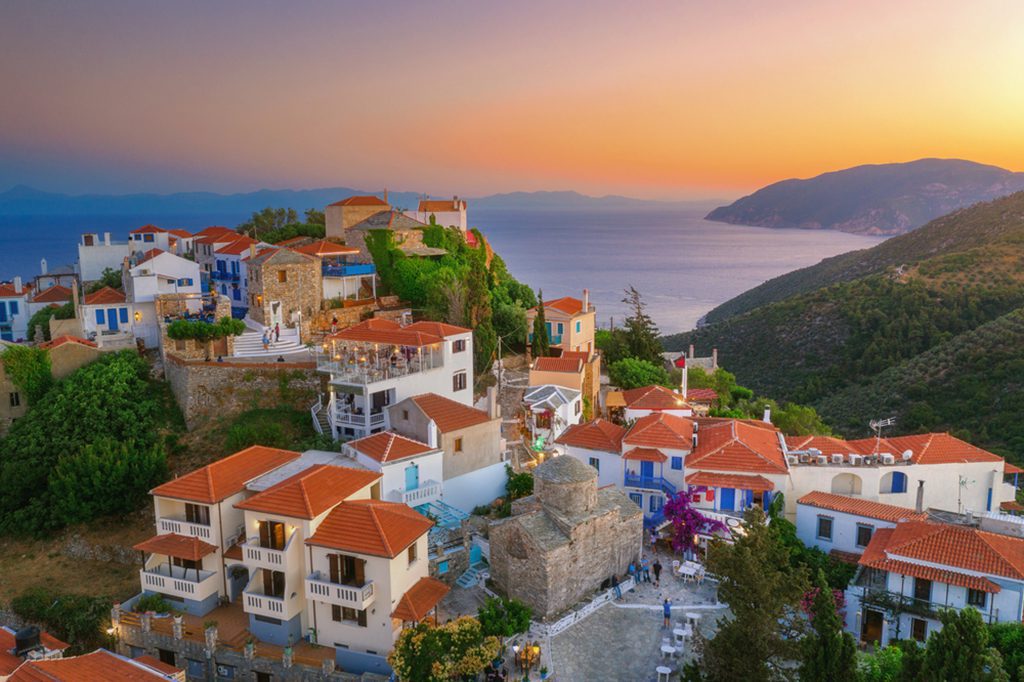
The Eastern Sporades are a group of islands, with Alonissos being the biggest and the only one with a permanent population. The island is not as busy as its neighboring ones because of its distant position and few boat connections. The majority of its visitors are Italians, Britons, and Athenians.
One of the region’s less populated and developed islands is Alonissos. The island and many others in the Northern Sporades archipelago make up the National Marine Park of Alonnisos, and it is renowned for the incredible natural beauty of its passion flowers, pine woods, honeysuckle, olive groves, and apricot orchards.
Some of the best white-pebble beaches and clearest seas can be found in Alonissos, thanks to its status as a marine park. Animals, including dolphins, migratory birds, and the Mediterranean monk seal, visit this area. Recreational activities such as hiking, boating, and scuba diving are all rather common.
Alonissos Town, the island’s capital, and Patitiri, the island’s port, are both worth a visit due to their scenic locations on a hill overlooking the sea. The Alonissos Museum is the biggest privately owned museum in the Aegean, and the Alonissos Women’s Association sells handcrafted sweets cooked using ancient recipes passed down through the generations.
33. Tinos
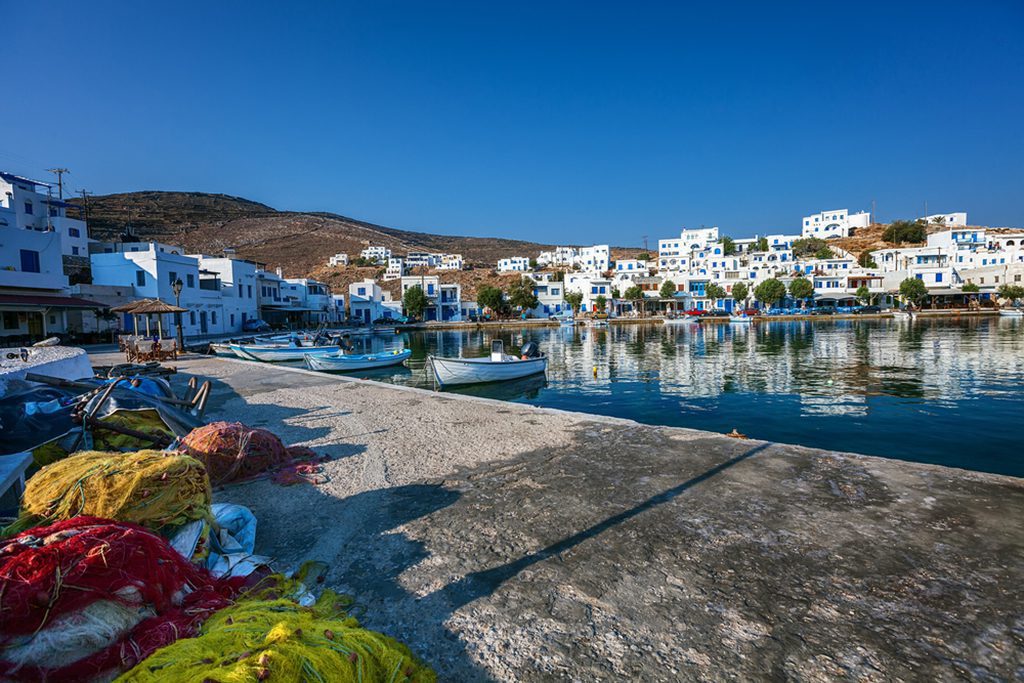
Located in the Cyclades group, Tinos is one of the most visually appealing Greek islands. The ferry between Athens and Mykonos stops here, and it was once known as Ophiussa or Hydroessa. Tinos, on the other hand, is a popular destination in its own right, drawing visitors interested in things like hiking, surfing, scuba diving, and mountaineering.
Tinos is a popular island for those who want to experience authentic Greek life without the commotion of Mykonos. There are several charming towns in Tinian to discover, each with its own unique character and charm. Many of these villages have preserved their Cycladic architecture, charming plazas, and ancient churches. Discover the abandoned Monastiria in Dyo Horia, as well as Greek Orthodox and Roman Catholic churches, Jesuit and Ursuline monasteries, and other religious sites in Loutra.
Tinos Town is the island’s major settlement and a must-see for its pigeon homes, festivals, and Evangelistria church, which holds a figure of the Virgin Mary. Another must-see is the Panagia Megalochari church, which serves as a destination for many visitors.
32. Astypalaia
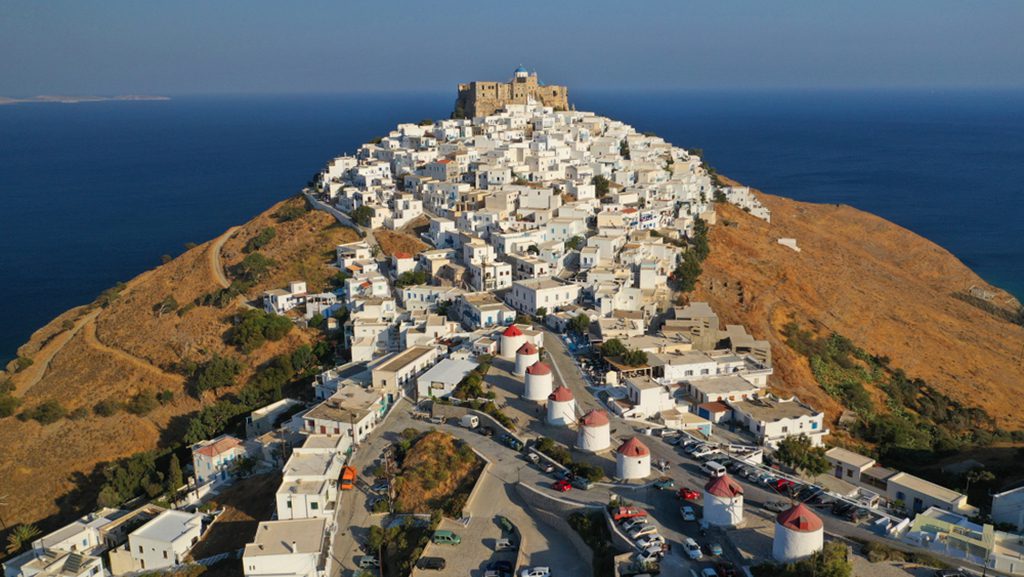
The island of Astypalaia is the furthest west in the Dodecanese group of islands and has earned the nickname “Butterfly of the Aegean” due to its unusual form. But when you take into account its past, present, and future, you may compare it more to the Cyclades.
With a population of a little over a thousand people and a rich history dating back centuries, the island of Astypalaia is a great choice for anyone seeking a more genuine Greek island vacation. There are no prearranged tours available.
Due to natural features, Astypalaia may be roughly divided into halves: the western Mesa Nisi and the eastern Exo Nisi. Chora, the capital, is a fascinating place to explore. Whitewashed Cycladic structures, windmills, and a castle with beautiful Aegean vistas make up the stunning backdrop of this amphitheater-style structure. The Municipal Library, the Town Hall, and a well-known traditional café called “Mouggos” are all worth seeing.
Astypalaia is a paradise for gourmets. It’s well known for its seafood, especially lobster, as well as its honey and cheeses.
31. Ios
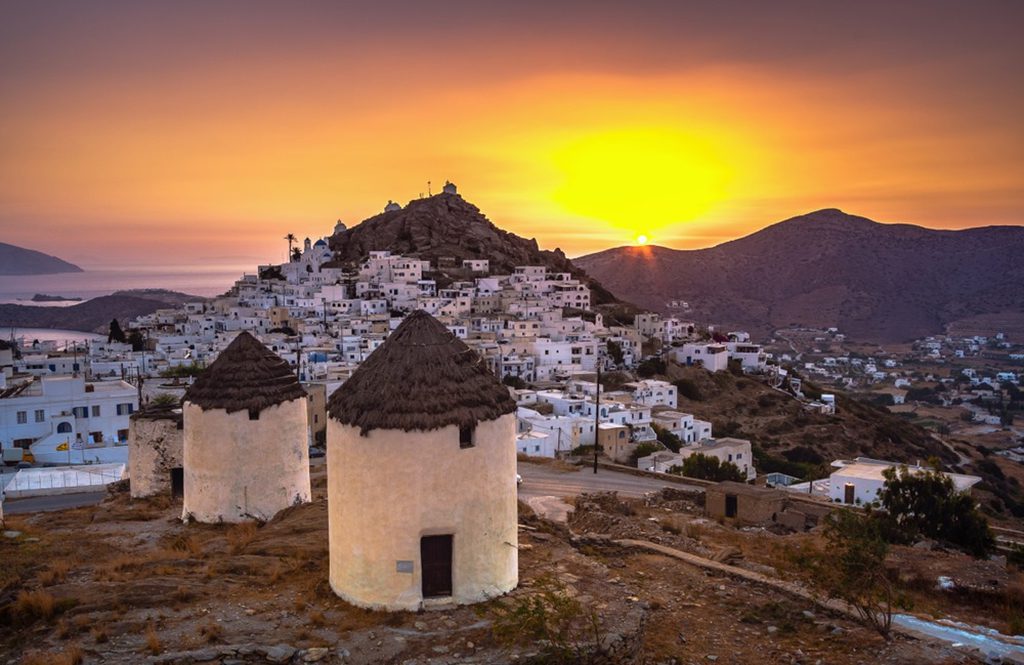
The Cycladic island of Ios is well-known across the world. Ios has a reputation as a party island, but there is much more to see and do here if you can manage to skip the peak summer months of July and August.
The island of Ios is known for its whitewashed structures, cobblestone lanes, gorgeous beaches, and clifftop settlements. Beaches aren’t all geared toward rowdy beach parties, and there are hundreds of churches to visit, many of which are historic landmarks. Scuba diving, windsurfing, jet skiing, and banana boat rides are just some of the water sports that may be enjoyed here.
There is a church dedicated to the Virgin Mary named Panagia Gremiotissa in Ios Town’s Chora. The Palaiokastro (Old Castle) on the island’s eastern side is the primary draw, since it contains the ruins of a Byzantine fortification.
30. Leros
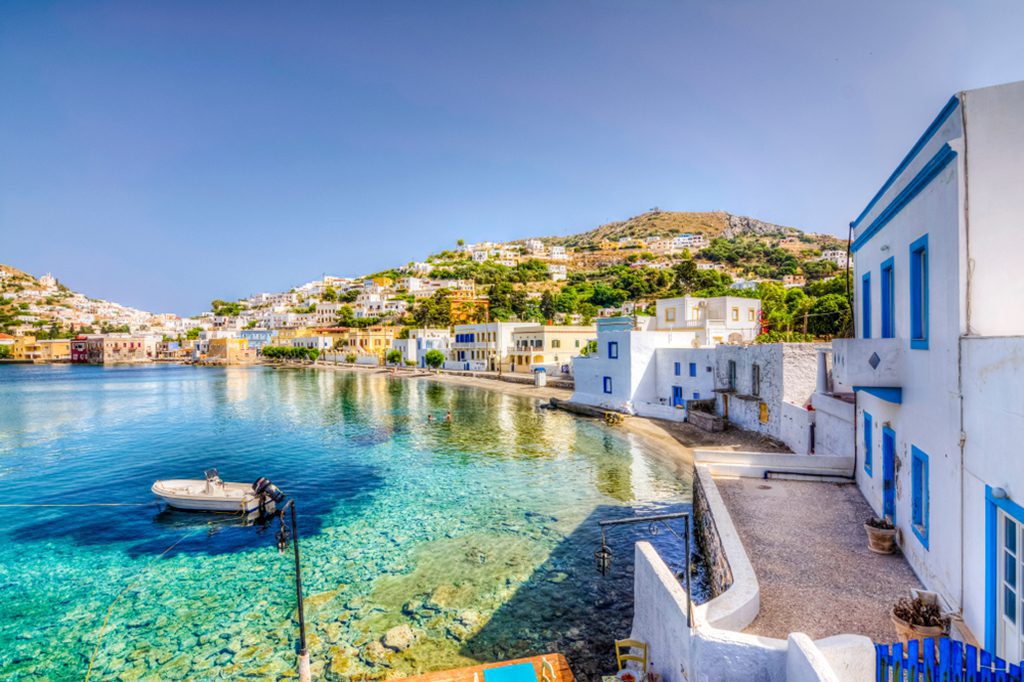
Located in the southern Aegean, the island of Leros is part of the Dodecanese group of islands. Medieval castles, antique museums, Orthodox churches, and picturesque coastlines give it an enchantingly forlorn atmosphere. It is also much less crowded than its neighboring islands since it does not have the magnificent sandy beaches that they have.
The slower pace of life is what Leros is all about. Relax on pebble beaches and eat delicious Greek food at local taverns. Visit the Agia Marina and the municipal hall in Platanos, the island’s capital. The area is also home to picturesque clusters of windmills.
The 11th-century Castle of Leros atop Apitiki Hill, the Church of Panagia Kavouradena, and the War Museum are all great places to learn about the island’s past.
29. Milos
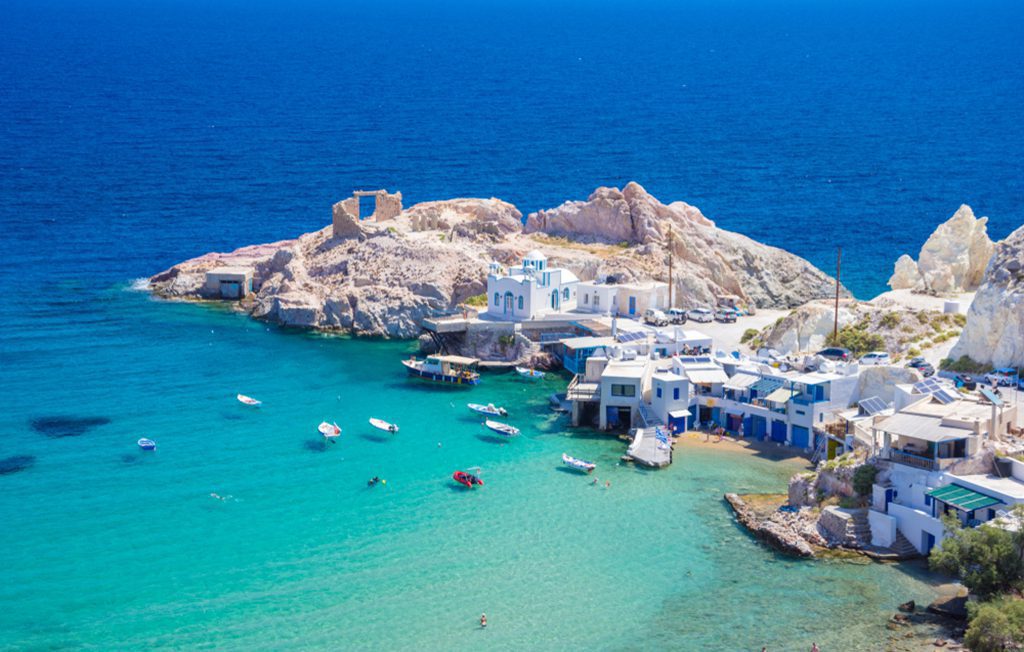
One of Greece’s best-kept secrets is the island of Milos, which sits perched above the Cretan Sea and has more beaches than any other Cycladic island. Milos is a long way from Athens, so unless you have a lot of time on your hands, you should probably just fly there rather than take the boat.
The mining industry on the volcanic island of Milos stretches back to the Neolithic period, and the island’s spectacular landscapes—from its dramatic rock formations and hot springs to its steam vents and mineral quarries—are well-known worldwide as a result.
The island’s western portion is protected as a natural preserve, and it’s home to some fascinating animals, including the Mediterranean seal, the Milos viper, and the peculiar crocodilian-like Mlos wall lizard. Lounging on beaches and participating in outdoor pursuits like windsurfing, boating, sailing, and horseback riding are great ways to spend a vacation.
The Milos Mining Museum, the nearby Sikia Cave, and the statue of Aphrodite (currently housed in the Louvre in Paris) are among the popular tourist destinations on the island of Milos.
28. Syros
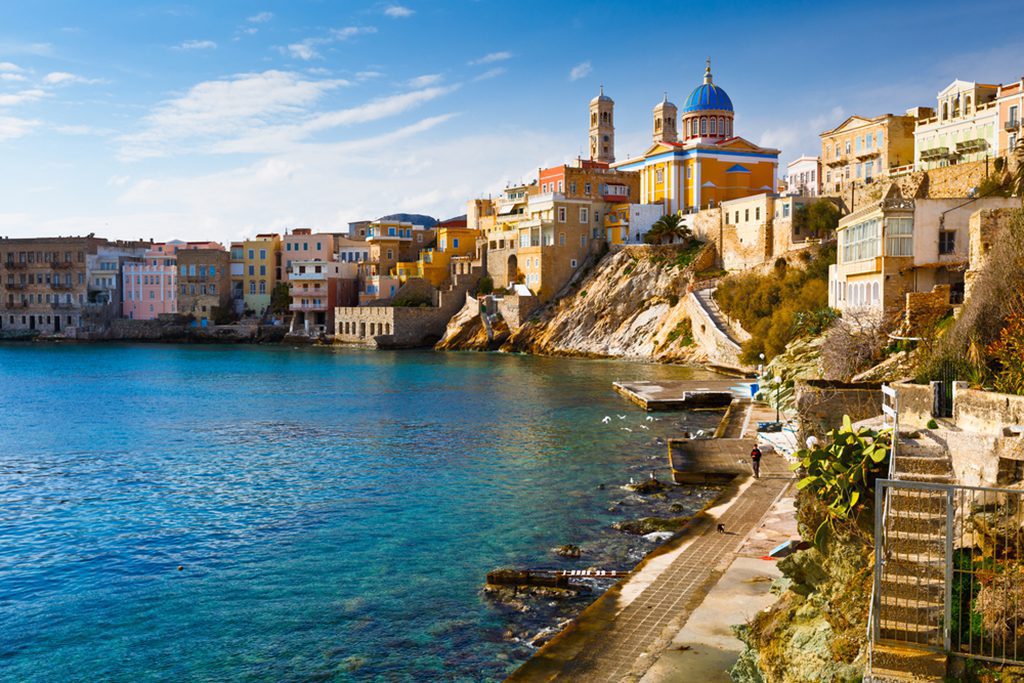
Syros is the capital of the Cyclades despite being one of the smaller islands in the group. Ano Syro, the island’s initial village, and Ermoupolis, its modern-day counterpart, with its old museums and structures, provide a delightful contrast between the new and traditional.
Syros is a great weekend getaway from Athens and can be reached by boat in about three hours. Syros, with its less-crowded beaches and preserved ancient buildings, is a popular alternative to the party islands of Santorini and Mykonos.
It is definitely worth your time to wander the city, with its winding lanes and colorful residences that slope down to the Aegean Sea. Explore a wide variety of impressive structures, such the town hall, the Apollo Theater, and the Agios Nikolaos Church, which is distinguished by its distinctive blue dome.
27. Amorgos
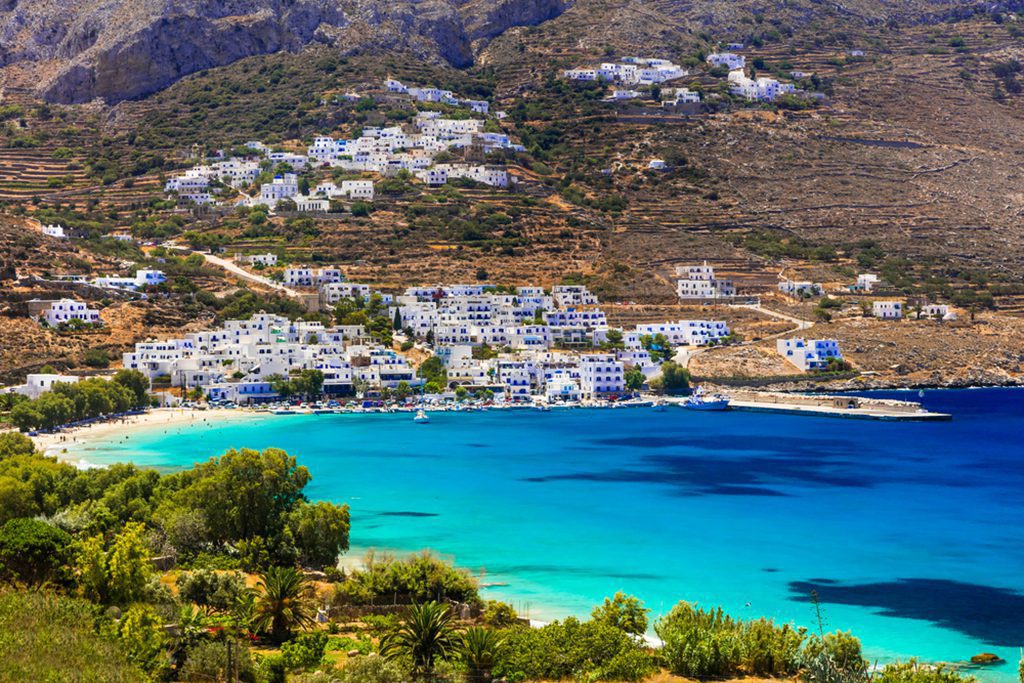
Amorgos, which resembles a seahorse, is the most eastern of the Cyclades and the closest to the Dodecanese. As a result of their distance from Athens (even the quickest boat takes seven hours), these two lovely ports are seldom visited by tourists.
Because of its isolation, Amorgos is an excellent destination for anyone interested in free-diving, hiking, and lounging on the beach. The beach route between Chora and Katapoula is among the best of several excellent walking pathways crisscrossing the island.
Explore the churches and bougainvillea-covered streets of Chora. The Hozoviotissa Monastery, the Amorgos Archaeological Collection, and the Venetian Gavras Tower, built in the 16th century, are all must-sees on the island.
26. Patmos
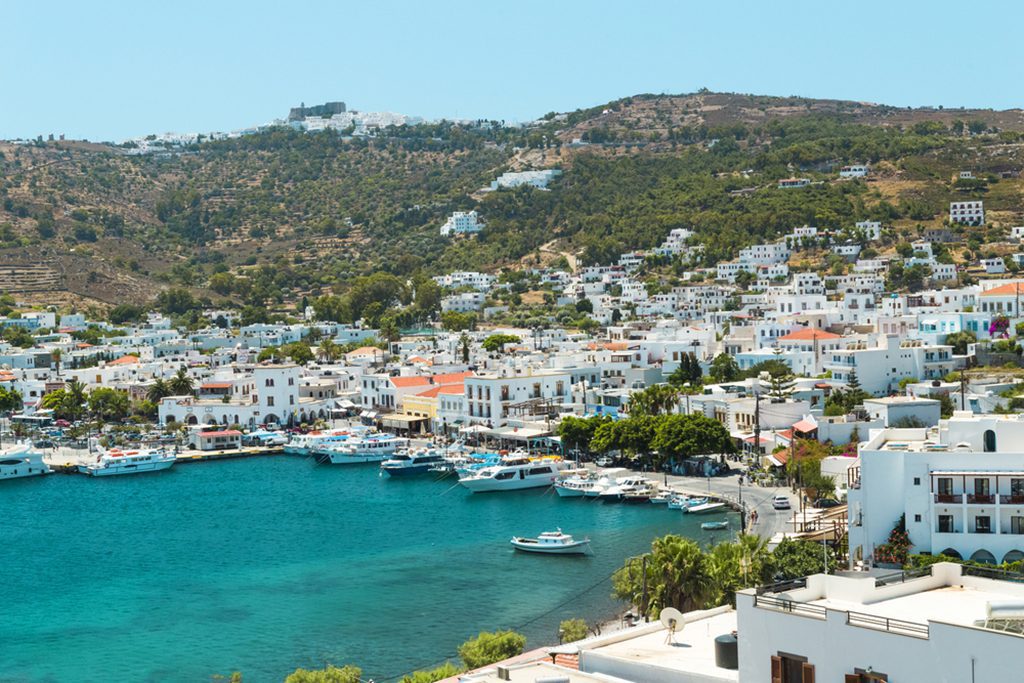
Patmos is the most well-known of the Dodecanese islands, and its hourglass shape, pine-covered slopes, and mountaintop Chora, with its whitewashed labyrinth of homes, make it a relaxing vacation spot.
Emphasis is placed on the beaches and bays, many of which remain uncrowded even at the height of the tourist season. The lack of an airport on the island may account for this, which is good news since it keeps the crowds away.
The Cave of the Apocalypse on the island of Patmos is the principal attraction there since it is believed to be the location where St. John got the revelations that became the book of Revelations in the Bible. Spiritual tourists flock to the cave and the island’s monasteries and Orthodox churches.
25. Karpathos
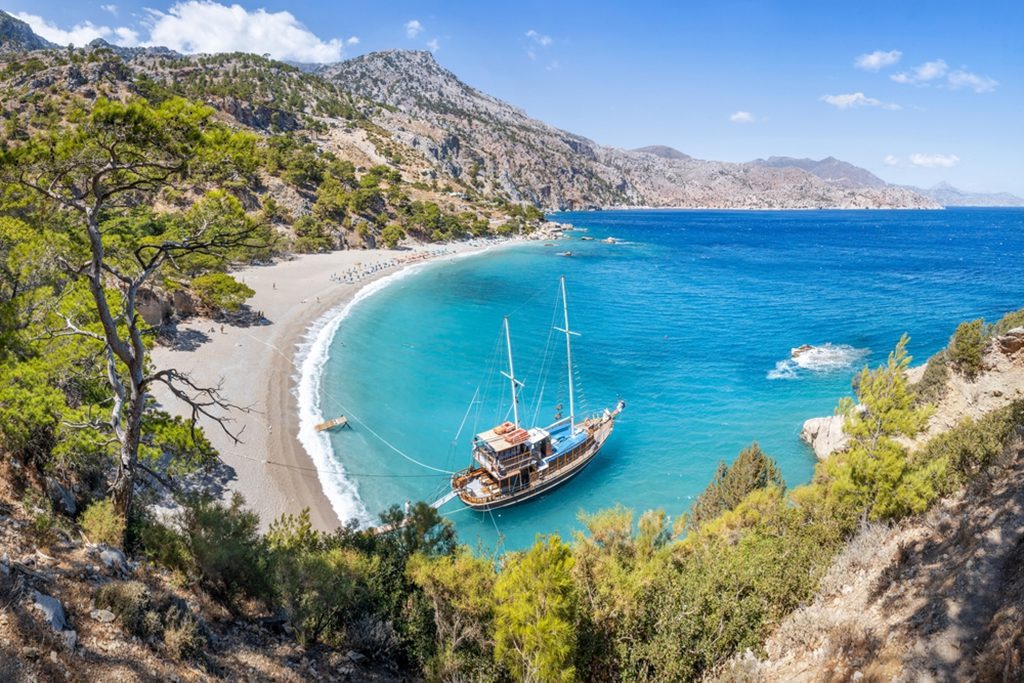
The island of Karpathos is the third biggest in the Dodecanese. Both beachgoers and adventurers will appreciate its craggy mountains and clear coves.
In the south you can find beautiful beaches, while in the north you will find picturesque cliffside settlements. The Archaeological Museum of Karpathos is located in Pigadhia, the island’s capital.
In addition, Karpathos is a haven for adventurers because of the island’s plethora of watersports options, including kiteboarding, windsurfing, and scuba diving. Finding a beach to lie on and soak up some rays is a simple option for those in need of downtime.
24. Folegandros
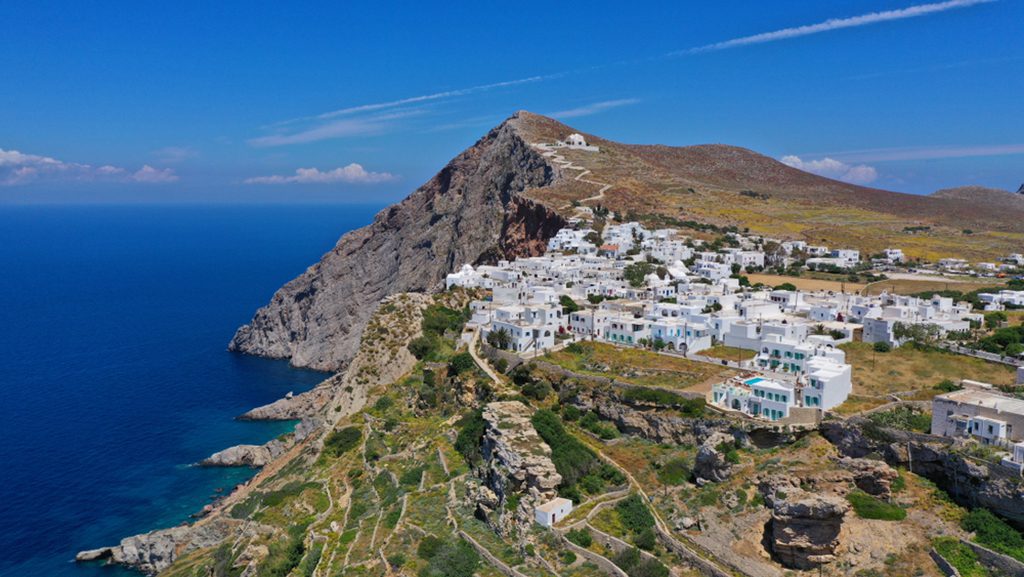
A small, rocky island in the Cyclades group, Folegandros is located in the group’s southernmost region. Conde Nast Traveler calls the Greek island of Folegandros one of the most beautiful undiscovered islands in the world. Even though it is not a typical package-holiday location, you should visit now before the masses arrive.
Isolated Folegandros, which served as a political jail until the twentieth century, is just 45 minutes away from Santorini via boat. It’s a peaceful alternative, with a beautiful landscape dotted with chapels and Greek antiquities and beaches like Angali Beach, widely considered to be among the most beautiful in all of the Cyclades.
Perched on a rock, Chora is one of the most picturesque settlements on the islands. The Kastro, a fortification from the 13th century, serves as the foundation for part of this classic medieval settlement. Don’t leave without seeing Karavostasi, a picturesque fishing town with Cycladic structures wrapped in colorful bougainvillea.
23. Skopelos
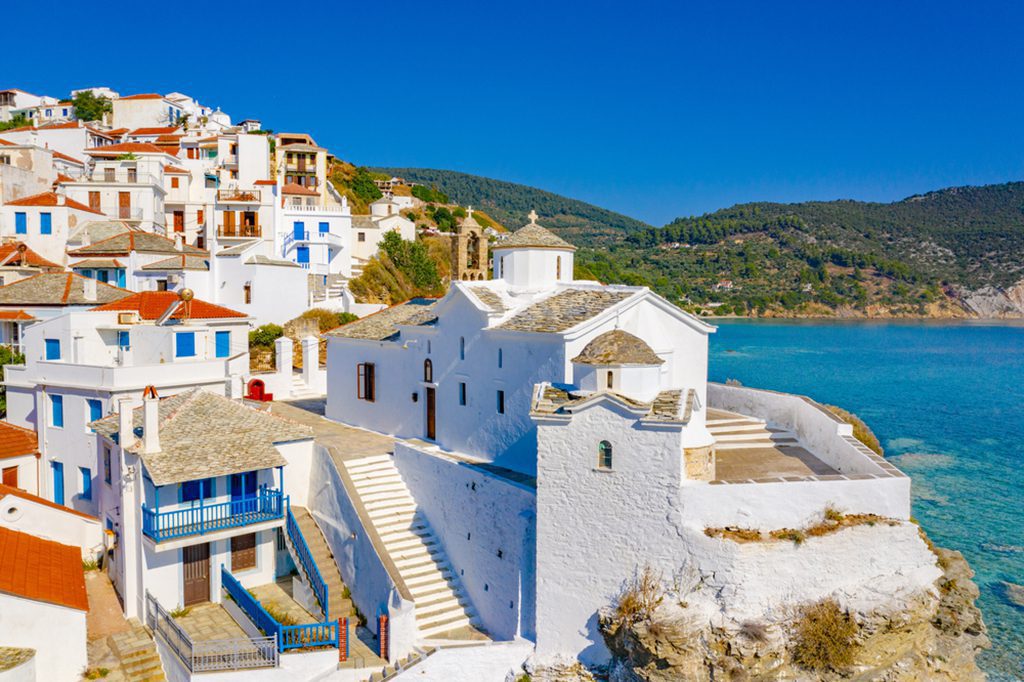
Skopelos is one of the most beautiful islands in the Northern Sporades, with its pine woods, olive groves, plum trees, almond orchards, and rolling vineyards. The island is most known as the setting of the 2008 film Mamma Mia!, but it also has some stunning beaches and trekking opportunities.
Skopelos has long been recognized as Greece’s greenest island, making it a fantastic destination for ecotourists. Cycling the island’s back roads in search of the next great beach is only one of many activities available. Other options include hiking through pine woods and sea kayaking in the Aegean.
Skopelos Town, the island’s principal port on the southeast side, is home to several stunning buildings. A second port, Loutraki, makes Skopelos convenient for yachters and cruise ship passengers.
Skopelos is home to more than 300 churches and chapels, the oldest of which is Agios Athanasios, built in the 11th century and located in the Kastro district.
22. Skyros
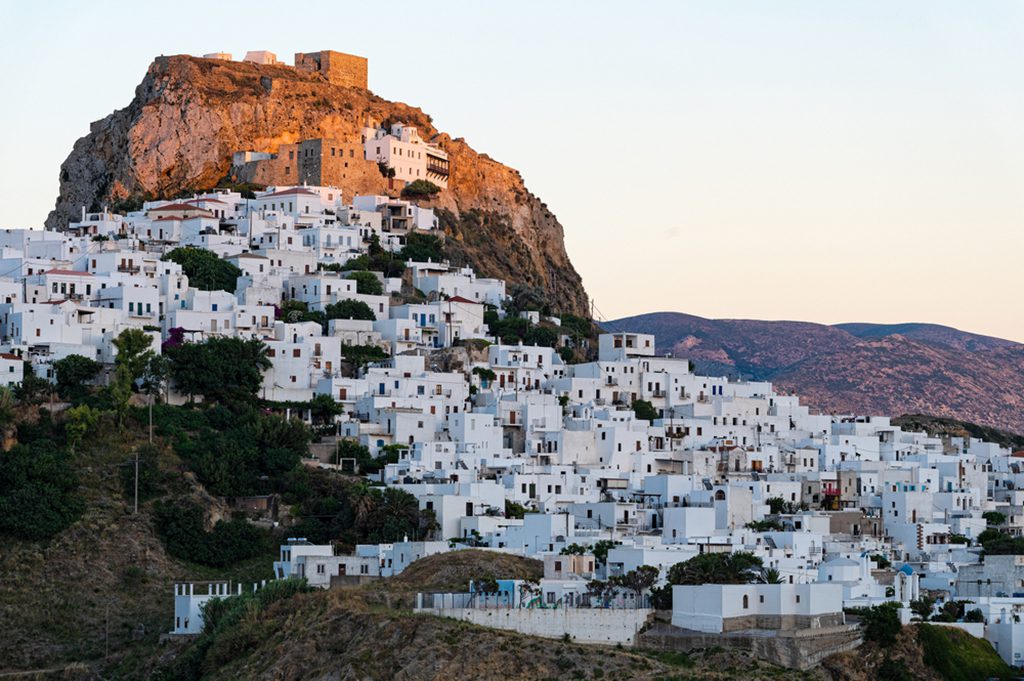
As the biggest island in the Sporades, Skyros has a Cycladic vibe thanks to its many whitewashed villages. The rocky coastline and desolate hills of the south stand in stark contrast to the beautiful scenery, shimmering bays, and pine woods in the north.
This lovely Greek island is dotted with picturesque beach towns and hidden bays just waiting to be discovered. Much of the action happens here, with its dazzling white buildings and the remnants of a Byzantine stronghold.
Skyros is a beautiful and exciting island that thrill-seekers, adventurers, and water babies will all enjoy. Hike to discover Skyrian horses, observe birds (including the Eleonora’s falcon), and partake in water activities (especially scuba diving) to fill your days.
21. Lesbos
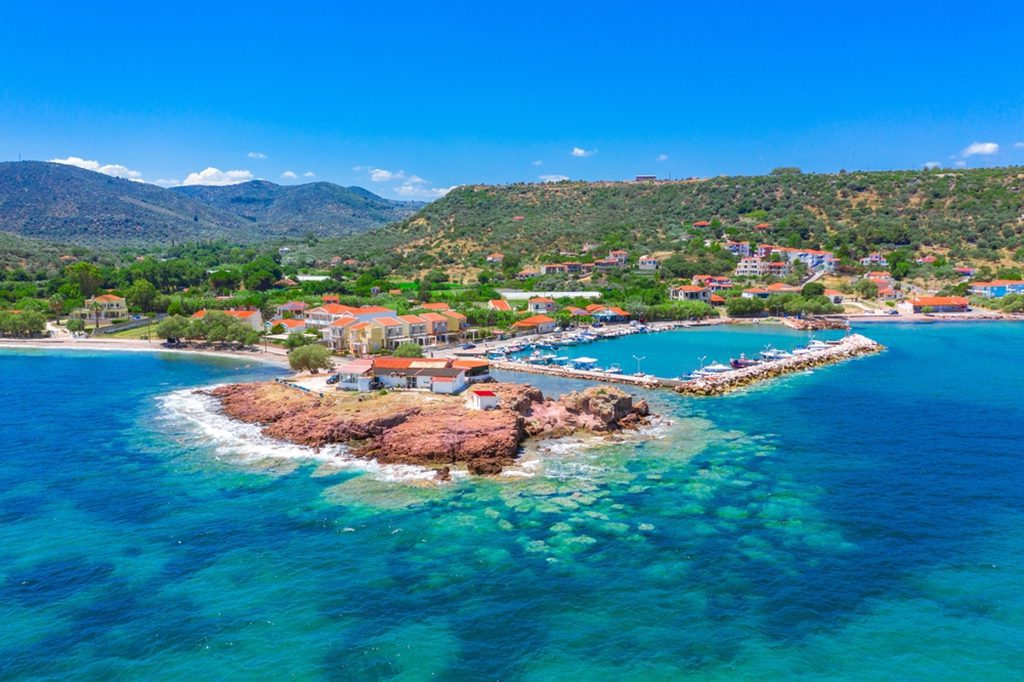
Lesbos (sometimes spelled Lesvos) is the third biggest island in Greece and is known for its stark contrasts: on one hand, you’ll find sandy beaches and saline marshes, while on the other, you’ll find dense woods and millions of olive trees. The island’s hot springs, however, are the island’s crowning glory; they rank among Europe’s hottest.
The arts and culture of Lesbos are well-known. There are several well-known Greek poets and authors who call this place home. You may get high-quality handmade ceramics at bargain prices in towns like Agiasos and Mandamados on the island. Besides its famed olive oil, Lesbos is also known for its delicious ouzo. The island is widely acknowledged as the spiritual origin of this well-known Greek spirit.
Mytilini Town, Lesbos’s harbor and capital, is a must-see because of its vibrant culture and history. There’s also the petrified forest to the west and the Ouzo Museum near Plomari.
20. Sifnos
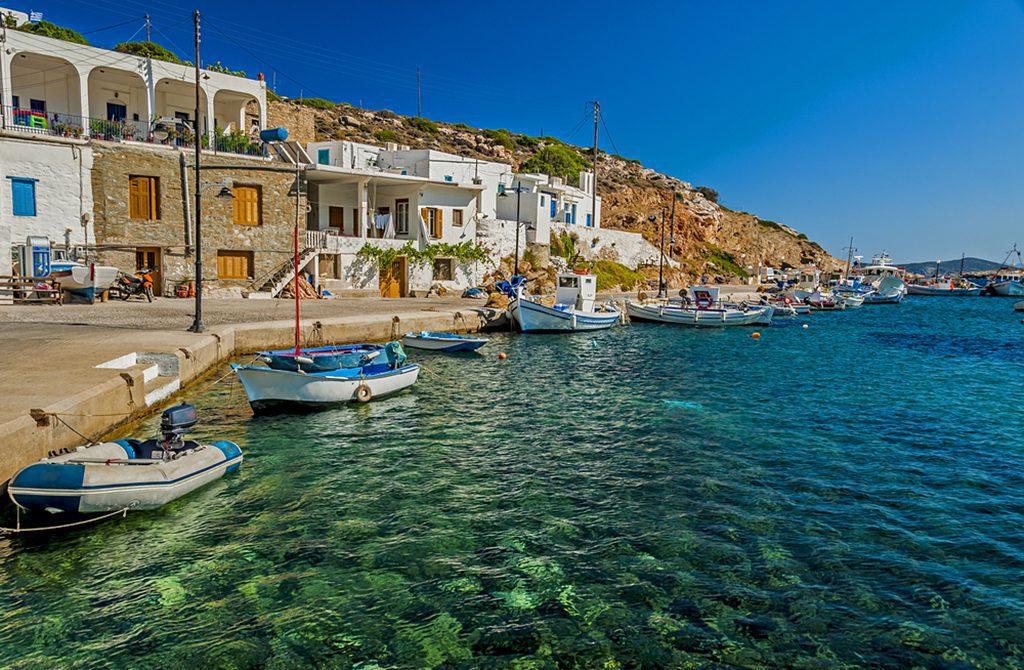
Located about three hours from Athens by boat, Sifnos is a tropical paradise in the Cyclades. It’s hard to imagine a more perfect setting for a relaxing island getaway than this one, complete with olive orchards, sandy beaches, almond groves, and picture-perfect coves.
According to Condé Nast Traveler, Sifnos is “the most delectable Greek island,” making it a great destination for anyone interested in both cuisine and the arts. The settlements of Vathi and Kamares on the island are well-known for their ancient arts and crafts, and you may visit their original pottery, basket weaving, and cooking studios. Don’t leave without sampling some of the local specialties, including amygdala, Greek salads with a twist, and exquisite mezze platters.
Kastro, the island’s medieval capital, and Apollonia, its contemporary capital, both provide a wealth of churches and monasteries to explore. The Khryssopiy Monastery is the most famous landmark.
19. Aegina
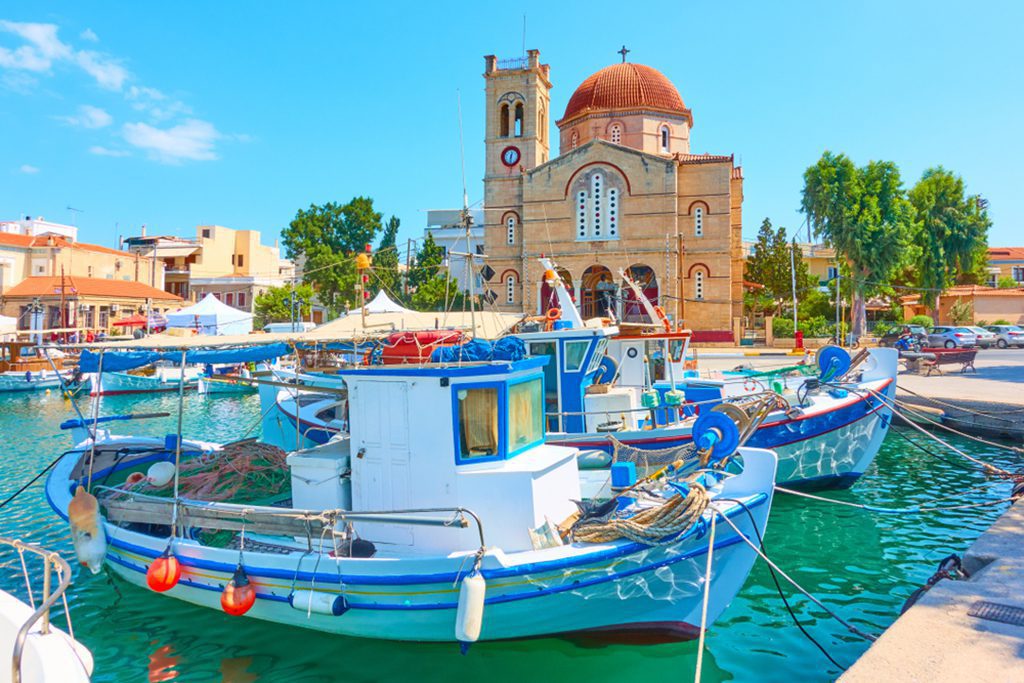
Located in the Saronic Gulf between mainland Greece and the Greek island of Poros, Aegina (sometimes spelled Egina) is one of the nearest islands to the Greek capital of Athens. It’s just 40 minutes from Piraeus on the mainland, so it’s always teeming with residents, which further adds to the area’s allure.
Aegina is remarkably untouristy for how close it is to the mainland, but it does have several well-developed beach bars if you go looking for them. Aegina’s allure, rather, lies in its historic Greek sites, seafront cafés, and pistachio groves.
It’s hard to argue that the Temple of Aphaia isn’t the island’s most famous landmark. Travel to the archaeological site of Kolona and the Byzantine remains of Paleohora. Aegina Town, the island capital, is home to beautiful Neoclassical architecture and a bustling harbor, and visitors may also spend time lounging on one of the numerous beaches here.
18. Andros
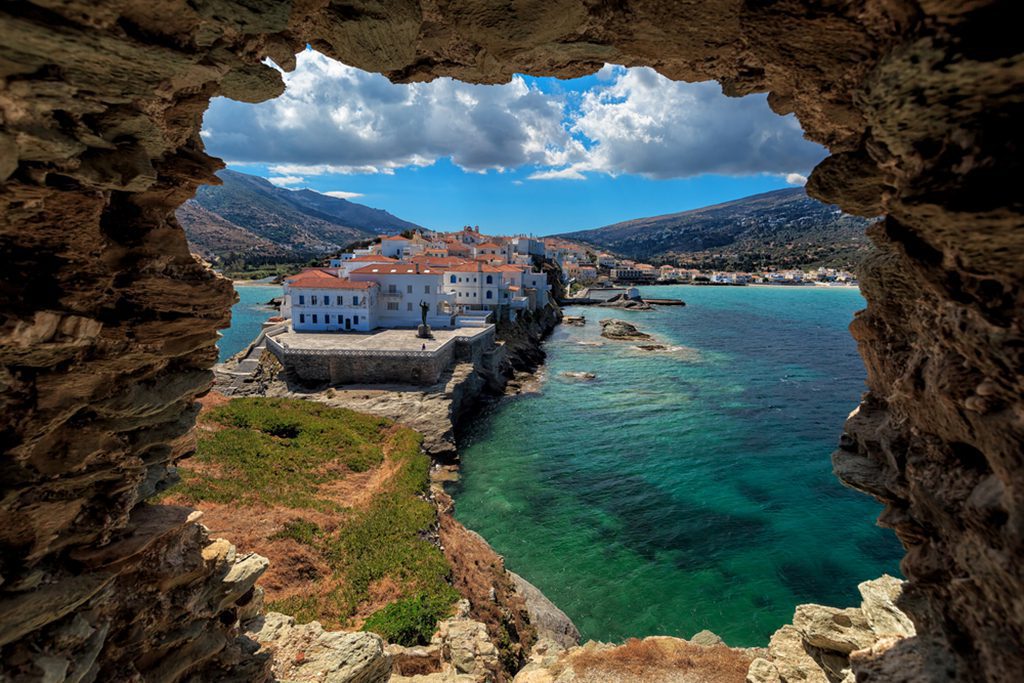
The Cycladic island of Andros is the second biggest in the group. The island is a hiker’s dream, dotted with citrus gardens, olive trees, and waterfalls. Actually, it’s one of the Cyclades’ greenest islands!
Andros is a paradise for outdoor enthusiasts, with miles upon miles of paths beckoning hikers and equestrians to discover the island’s stunning waterfalls, babbling brooks, and unspoiled valleys.
You may also enjoy a leisurely walk on the island’s cobblestone streets and trails through the island’s charming towns. Visit the neoclassical structures, ancient museums and monasteries, Byzantine cathedrals, and amazing archaeological sites.
Andros also has a number of pristine beaches that you may enjoy throughout your stay. Get your fill of aquatic activities, including swimming, scuba diving, fishing, windsurfing, waterskiing, and beach volleyball.
17. Chios
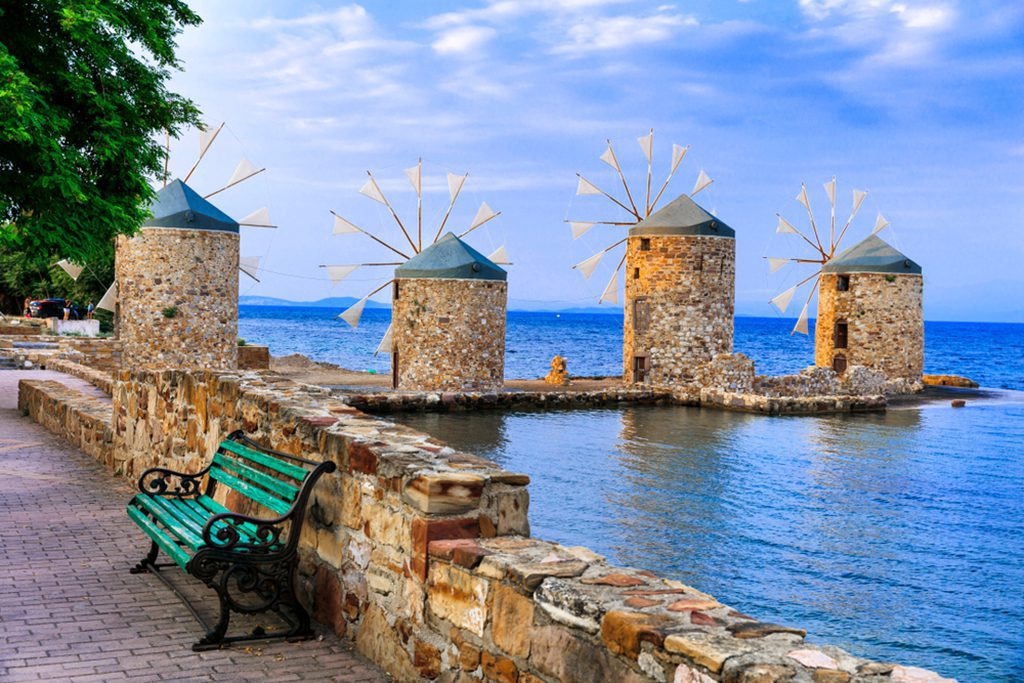
The northeastern Aegean Sea is home to Chios, the fifth-largest island in Greece. The island’s distinctive palace architecture, in addition to its remarkable Byzantine monastery and various charming fishing settlements, makes it stand out from its neighbors.
When wealthy shipping magnates lived on the island, they left these historic buildings behind. The island got its moniker, “the Mastic Island,” since it was the sole commercial manufacturer of mastic resin.
In today’s world, the rolling terrain is filled with olive trees, citrus groves, and mastic plants. You may buy anything from jam to chocolates, to perfume, to locally produced liqueurs like brandy and ouzo, created from this export.
Check out the olive, fig, and wine industries in Chios Town, the port city, and the town of Pyrgi, where you’ll see intriguing geometric designs known as’ graffiti ‘on the buildings. You should definitely check out the Chios Mastic Museum, which details the history of the island’s most well-known industry, from its origins in farming to its modern-day uses in cosmetics and medicine.
16. Thasos
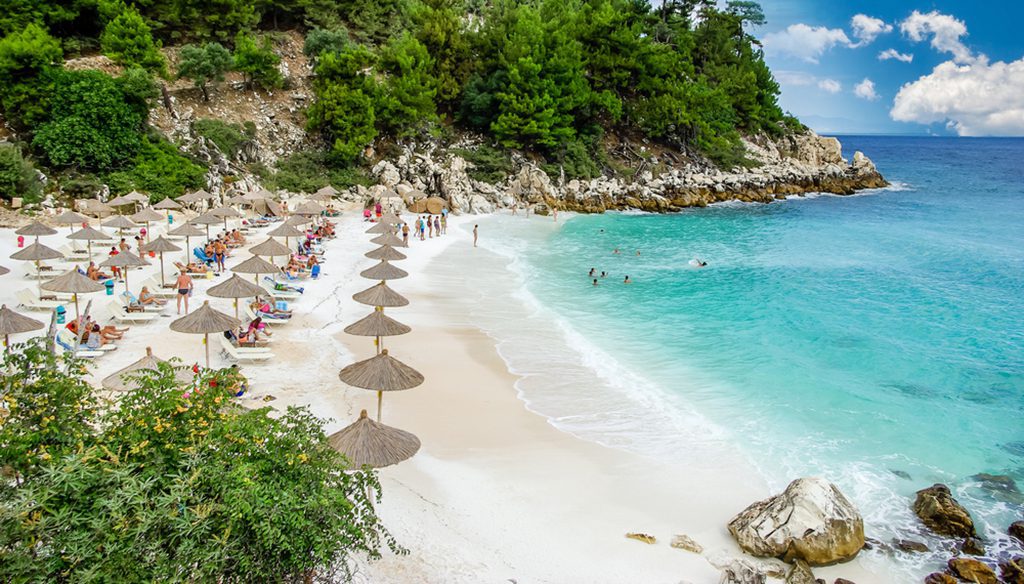
The island of Thasos, often spelled Thassos, is part of the North Aegean Islands. It is a paradise for nature lovers, with breathtaking landscapes ranging from olive orchards and wooded hillsides to beautiful coves and sandy beaches. Plan on spending your days outside doing things like hiking, sunbathing, scuba diving, and birdwatching.
Thasos is a popular destination for foodies since the island’s climate and soil are ideal for cultivating a wide range of olives, honey, fruit, and nuts. In this region, tsipouro, a native liquor, is preferred over wine.
Thasos’s natural beauty isn’t the only reason to come. There are several bouzoukia (music taverns) and traditional mountain communities to explore. Thasos Town, the capital, is home to an excellent museum and the Byzantine Moni Arhangelou; likewise, Alyki is where you’ll find an ancient Greek temple in addition to two early Christian basilicas.
15. Kefalonia
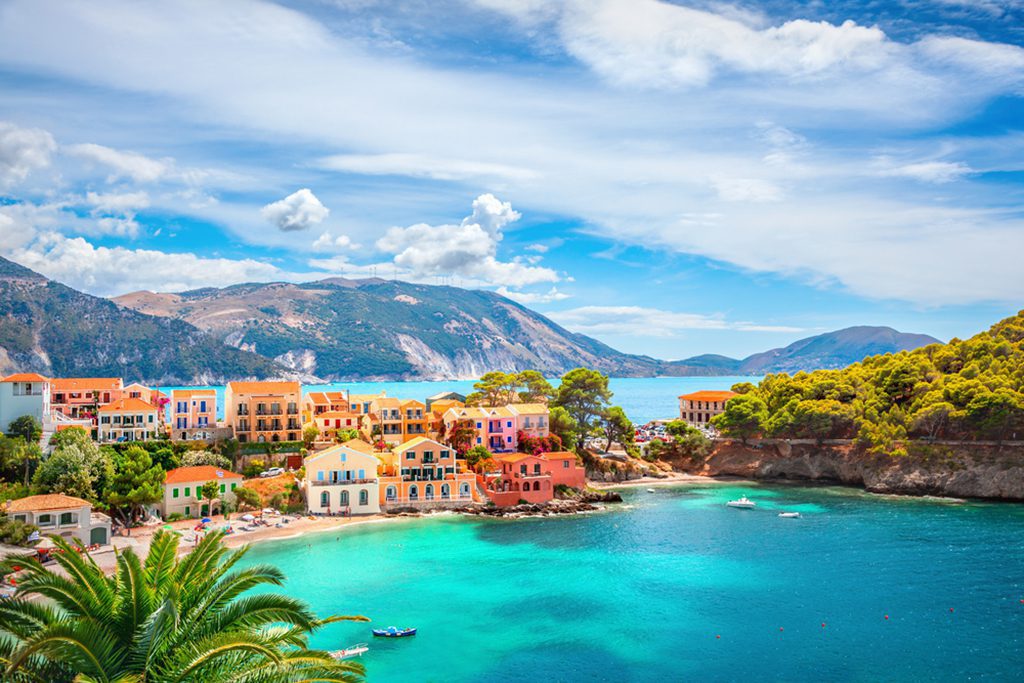
The biggest of the alluring Ionian Islands, Kefalonia, offers all you might want from a carefree Mediterranean vacation. The area is a popular tourist destination because of its many developed resorts, four beautiful peninsulas, and authentic communities.
Kefalonia is a popular destination for yachters because of its picturesque limestone coves, Venetian architecture, lush vineyards, and beautiful fishing towns like Fiskardo and Assos.
Not everything is built up, however. Kefalonia is home to Mediterranean oak woods, rolling meadows, and beautiful bays abounding with marine life, including Caretta-Caretta sea turtles. Kefalonia is known for having some of the most beautiful beaches in all of Greece and even Europe, with Myrtos Beach standing out for its pristine white sand.
Take a trip to Sami, the island’s historic capital and current harbor. In modern times, the island’s main focus has moved to the hilltop city of Argostoli, which is well worth seeing for its many shops, restaurants, and landmarks. Kefalonia also offers a variety of other activities, such as sailing, horseback riding, scuba diving, animal viewing, and visiting a historic Venetian castle perched on a cliff.
14. Symi
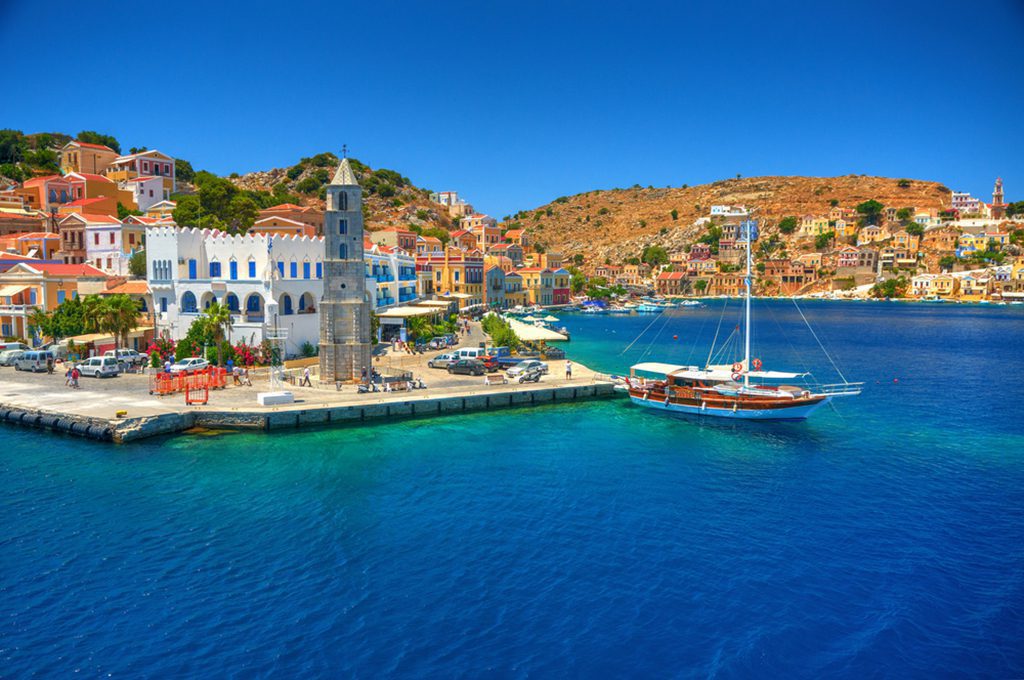
During the summer, the picturesque Greek island of Symi, located in the Dodecanese archipelago, is a popular tourist destination. The island’s impressive but now decaying neoclassical architecture provides a clue to the island’s former prosperity, which was based on shipbuilding and sponge diving. Symi is well-known now for its “fishing village” ambience.
Symi’s magnificent Gialos Harbour in Symi Town, the island capital, is surrounded by a sea of pastel-colored Italianate houses and is the first thing visitors to the island see. The remainder of Symi is mostly uninhabited, except for the remnants of the historic hamlet of Horio and the town of Pedi in the island’s southeastern valley.
The 18th-century Monastery of Archangel Michael Panormitis on Symi is a favorite destination for Greek Orthodox believers making the journey to the island. Symi’s summer visitors are drawn to the island’s azure bays, oak and pine woods (ideal for strolling), and pebbly beaches. Symi is best avoided by tourists in the spring and fall, so plan your trip accordingly.
13. Hydra
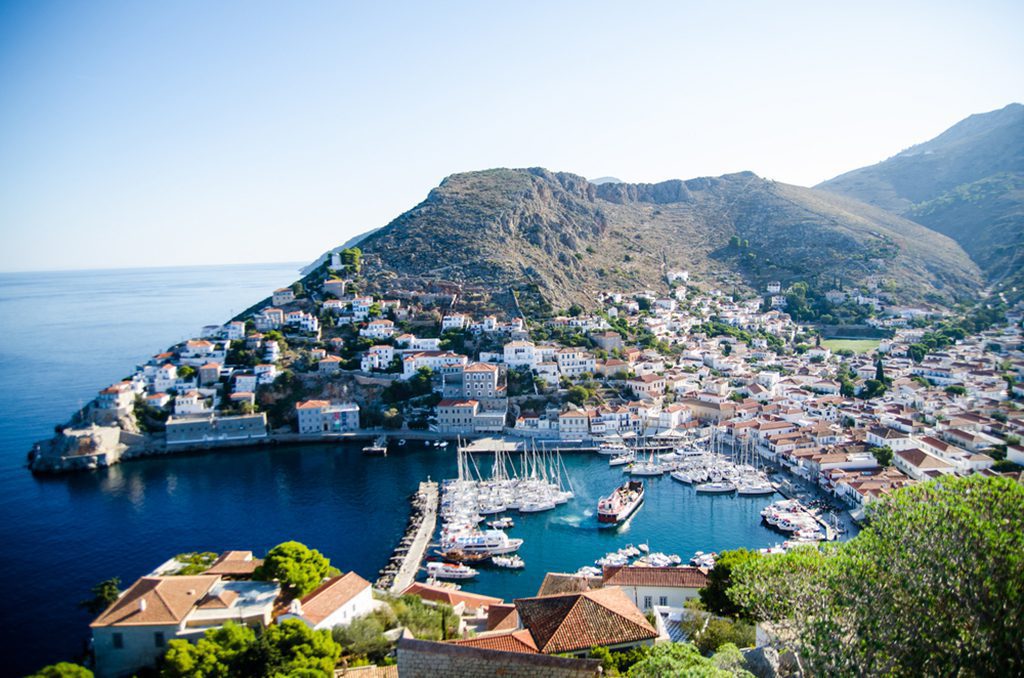
The island of Hydra, often spelled Ydhra, is one of the Saronic Group. Hydra has a certain rustic allure due to the complete absence of cars and roads on the island. As such, it’s no surprise that the island is a favorite among Athenians looking to spend the day somewhere else.
Ydhra Town, the island’s capital, is definitely picturesque, what with its neat rows of grey-stone mansions and white-and-red-tiled cottages perched over a lovely port. Wander its twisting alleys to see wild cats, donkeys, and 18th-century seaside homes, including the one that formerly belonged to the famed musician Leonard Cohen.
More than its urban centers, Hydra is known for its pine woods, ancient museums, and mountain monasteries. There aren’t many sandy beaches, but there are plenty of hiking paths, such as the one that goes all the way out to Cape Zourva, that go along the coast and past ancient churches.
Some of the city’s most famous landmarks may be found at the Lázaros Koundouriótis Museum, the Historical Archives Museum, the Yios Nikólaos monastery, and the Kmisis Theotókou church.
12. Lefkada
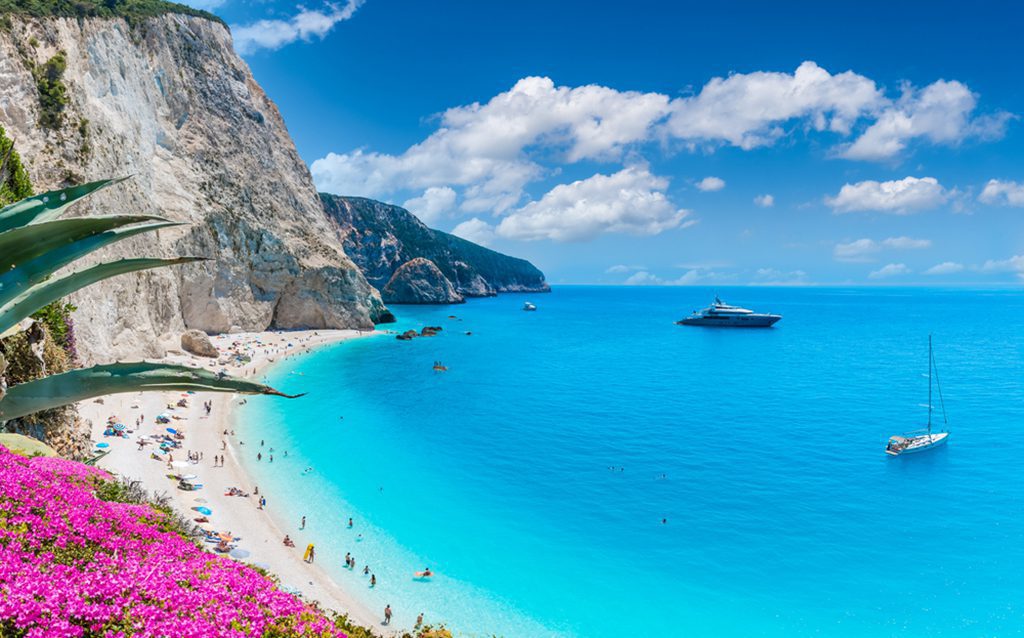
The Ionian Islands include Lefkada. It is one of the few Greek islands you can drive to since a short strip formerly linked it to the mainland. Despite being one of the most accessible islands, Lefkada has managed to avoid being overrun by tourists.
Wild mountains, waterfalls, olive orchards, lagoons, wineries, and Blue Flag beaches give this Mediterranean island its unique allure. There is an abundance of things to do on the island. Enjoy the sunshine when you kitesurf, windsurf, scuba dive, mountain bike, and horseback ride.
The town of Lefkada, with its excellent port, is a favorite destination for yachters; Vassiliki is ideal for water babies; it is reputed to be the biggest windsurfing center in Europe; and Nydhri is known for its laid-back atmosphere and beautiful views over the neighboring island of Meganissi.
Lefkada, known by its Venetian name, Santa Maura, is home to a castle that dates back to the 14th century; it is easily the island’s most famous monument.
11. Samos
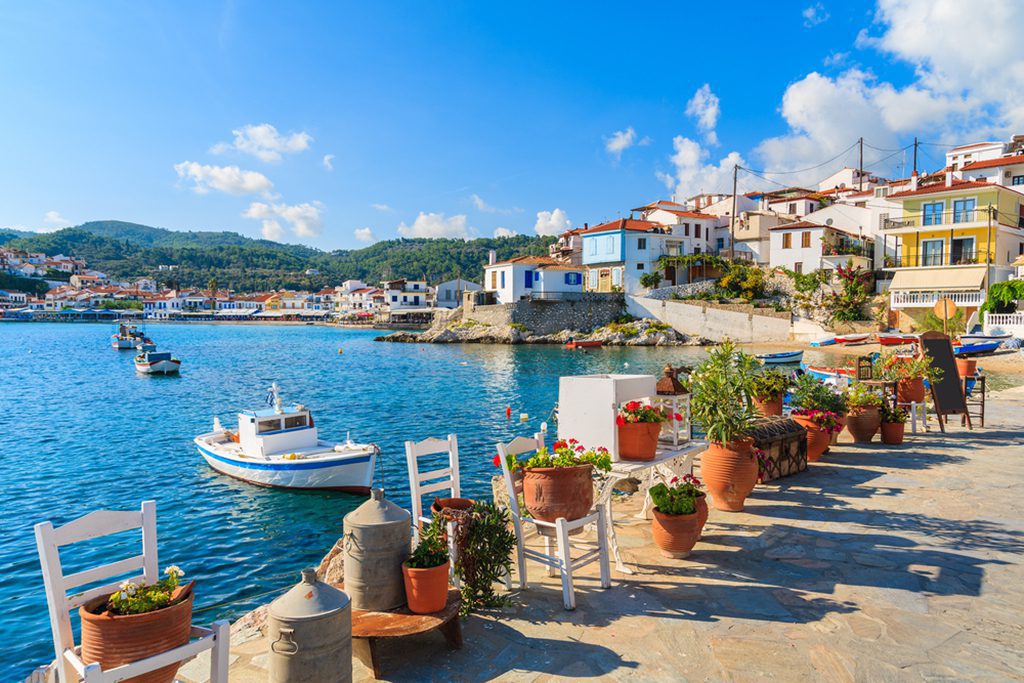
In the eastern Aegean, not too far from Turkey’s shore, lies a sizable island known as Samos. Samos is one of the greenest islands in the Aegean, with rolling hills and mountains covered in vines, and is known for its delicious Muscat wine.
Vathy is the capital city (or Samos Town). It’s home to a museum and several beautiful Neoclassical buildings in pastel colors, but the other settlements on Samos are where the action is. Travel to Kokkari and Karlovassi for their charming cafés and genuine village atmosphere; to Pythagorean for its Roman aqueduct from the 6th century; and to Heraion for the famous temple dedicated to the goddess Hera (supposedly the largest temple in Greece).
Mount Kérkis (Kerketévs), the second-highest peak in the Aegean, and the island of Samos’s many secluded beaches make it a popular destination for hikers and campers. Get some rays, swim, dive, windsurf, and hike in Samos. Trails of varying difficulty lead to scenic vistas of waterfalls, caverns, and settlements perched on cliffs, some of which have ancient monasteries.
10. Naxos
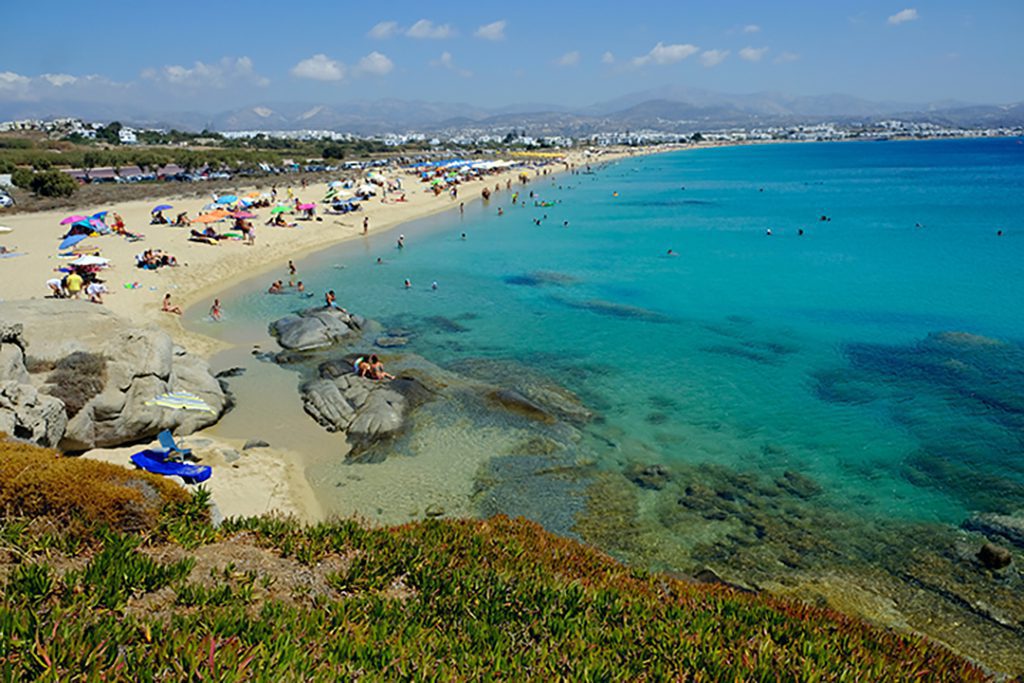
The Cyclades are made up of several islands, but Naxos is the biggest. It is one of the greenest and most fertile islands in the archipelago, with its high mountains, fig trees, vineyards, and olive groves.
In addition to its long-standing potato, olive, lemon, and grape industries, Naxos has seen a surge in visitors in recent years. Because of its convenient cruise ship port, Naxos is often one of the most visited islands during the high season. Plus, there are beautiful beaches and old Greek antiquities to discover on the island.
There is a lot to see in just one day in the island’s middle, which is home to verdant valleys, quaint towns, and important churches. Naxos is the highest mountain in the Cyclades, so hikers will enjoy exploring the island. Naxos Town, also known as Chora, is a must-see due to its picturesque harbor, Venetian-style homes, and winding cobblestone streets that lie at the base of a citadel.
9. Kos
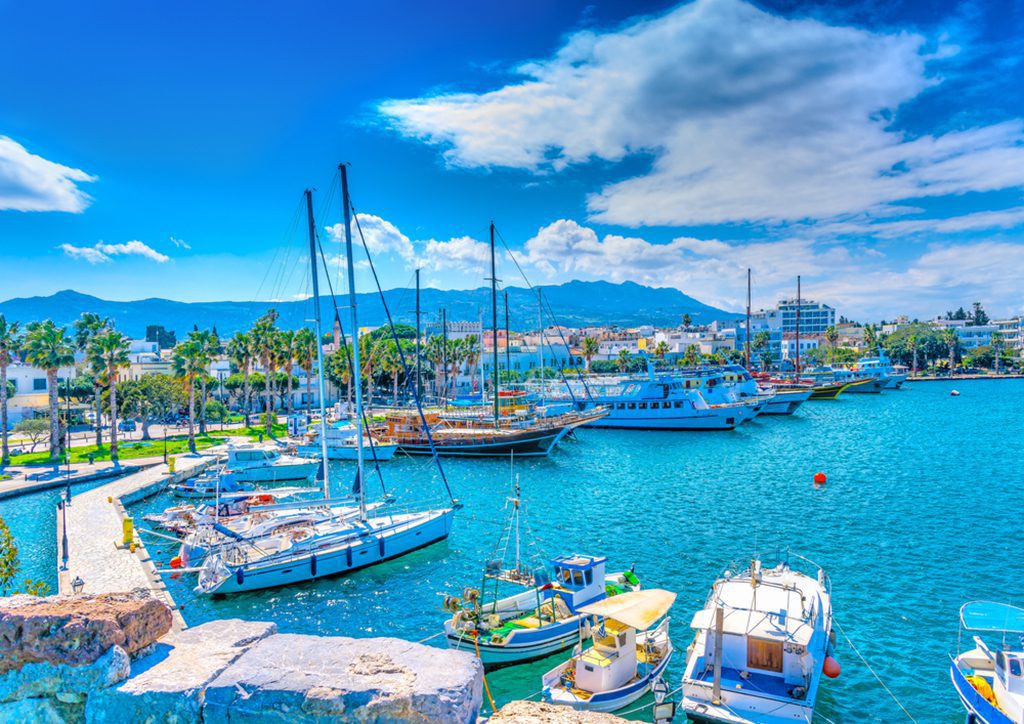
One of the Dodecanese island group’s most well-known islands is Kos, which is noted for its extensive network of sand beaches, mountain towns, and medieval remains. Inconveniently for those who like to explore on their own, Kos’s popularity means that the island is often jam-packed with visitors throughout the high season.
The cultivation of melons, the baling of hay, and the grazing of cattle make up the bulk of the island’s economy, alongside the influx of tourists. Kos Town serves as the island’s capital and primary port, and it is located near the Turkish mainland. Both the Ancient Agora and the Neratzia Castle, both erected in the 15th century by the Knights of the Order of Saint John, may be found in this area.
A second important historical location, Asklepion, is also well worth seeing. The Hippocratic Oath originated at the medical school founded by Hippocrates, a famous ancient Greek physician. Kos also has natural hot springs called Ebros Thermes, which may be enjoyed while biking about the island.
8. Zakynthos
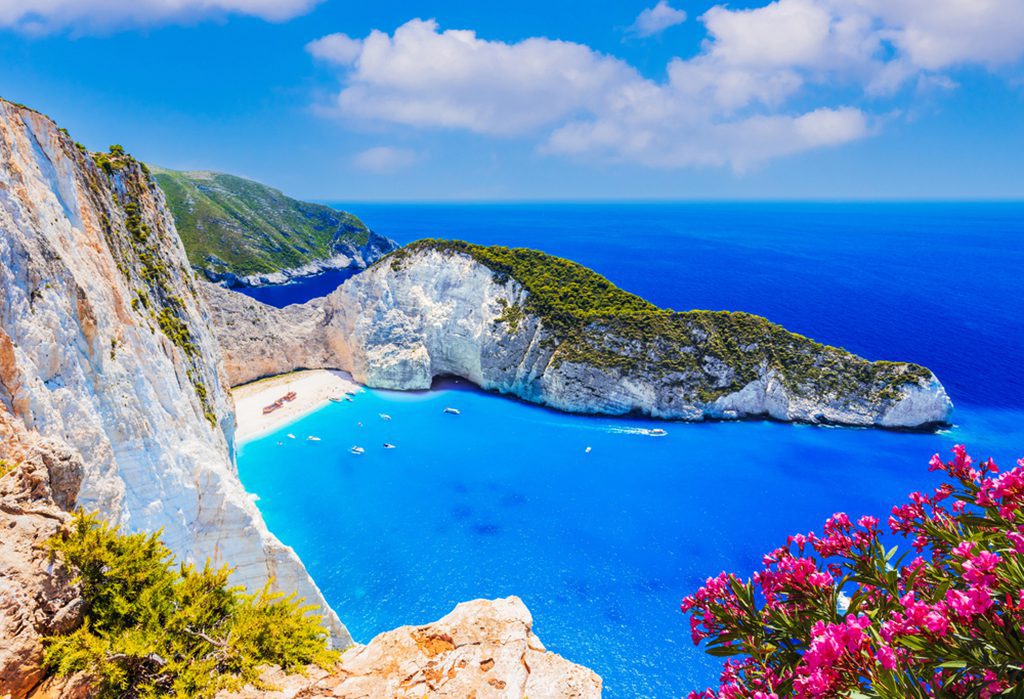
A stunning Ionian island, Zakynthos is sometimes known as Zante. Zante is a year-round paradise because of its stunning beaches, including the world-famous Shipwreck Beach, and its breathtaking Greek sunsets.
The diversity of Zakynthos’s attractions is one of the island’s greatest selling points. Plus, despite all its attractions, it has not yet been overwhelmed by vacationers. Some areas, however, see increased crowding throughout the summer.
Navagio Beach, also known as Shipwreck Beach, is a must-see when vacationing in Zakynthos. While most visitors take the boat out to the beach during the day, sunset offers a more peaceful vantage point from atop a nearby cliff.
Besides the Blue Caves and Marathonisi Turtle Island, other attractions include swimming at Xigia sulfur beach and enjoying the sunset at the Sunset Taverna in Keri.
7. Paros
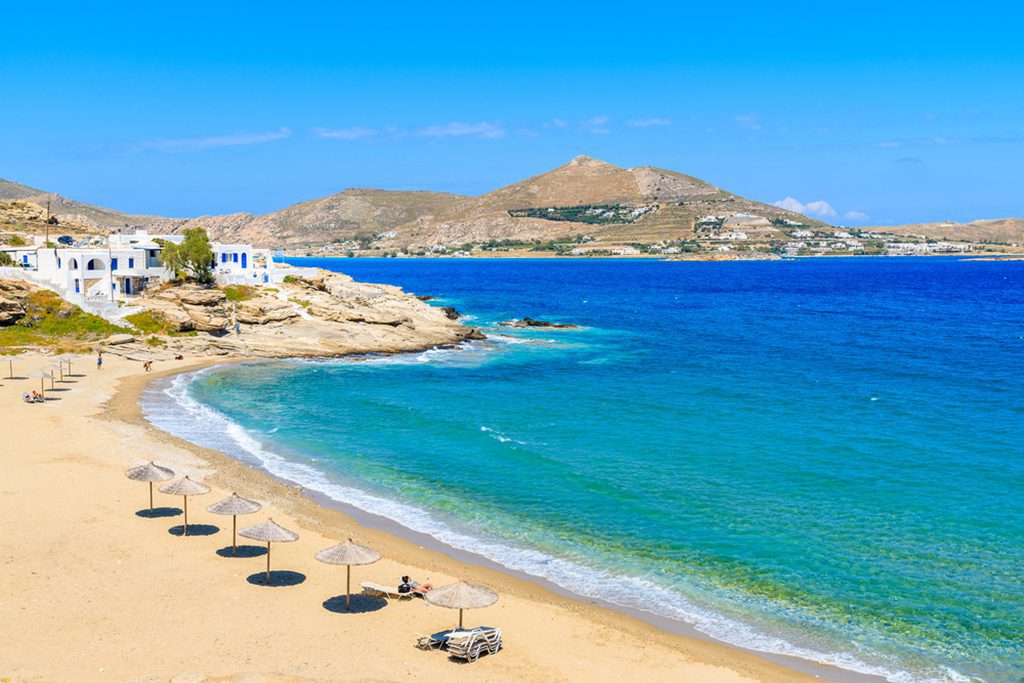
Less than three hours from Athens, the island of Paros offers a classic Greek getaway in its fishing towns, which are characteristic of the Cyclades. In addition to its traditional Greek buildings draped in purple and scarlet bougainvillea, Paros is known as a lively party destination because of its many cocktail bars and restaurants.
While Paros is known for its lively nightlife, that’s not all there is to do on the island. Activities like windsurfing, kitesurfing, horseback riding, yoga, and scuba diving also draw many visitors to the island.
The capital of the island, Parikia, is replete with whitewashed houses, Venetian-style villas, historic monasteries, and blue church domes, and its arcaded alleyways are a delight to explore. You could also check out the caverns on the nearby island of Antparos, which are full of stalagmites, and the harbor of Náoussa, the old capital of Lefkes.
In addition to the Yii Anárgyiri monastery and the archaeological museum, the Ekatondapylian (previously the Katopoliani) church, one of the most outstanding in the Aegean, is a must-see.
6. Skiathos
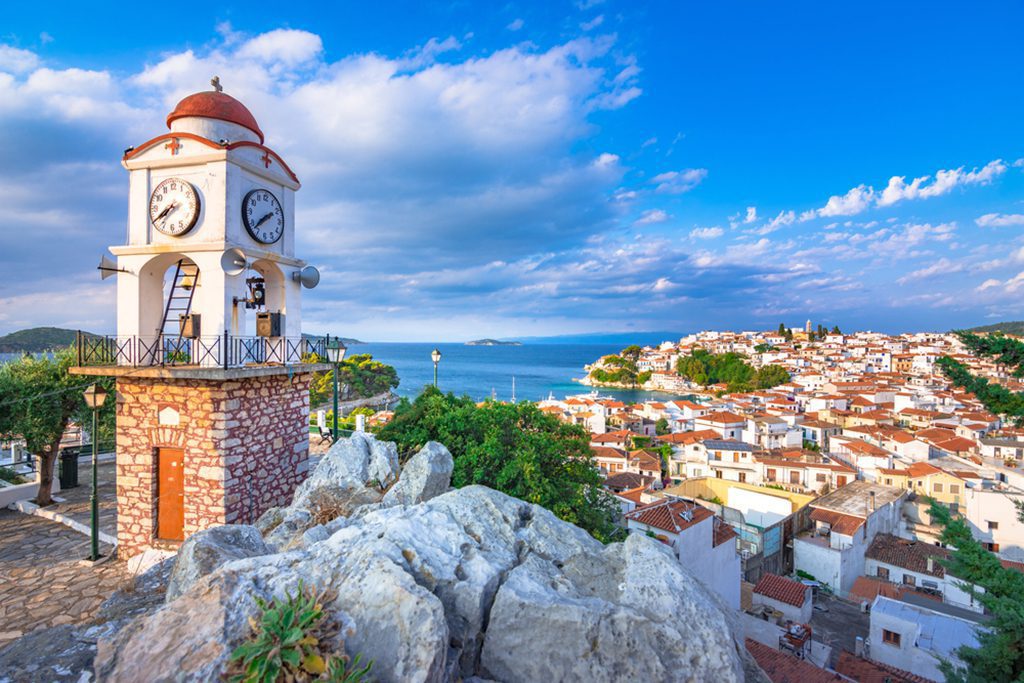
Skiathos Town, the island’s major port and epicenter of nightlife, is located on the island’s southeastern shore and is a veritable maze. In this area, you’ll find several restaurants and pubs with outdoor seating along the pedestrian-only Papadiamanti Street, which runs close to the historic port. In addition to the town and the airport, there are several waterfront clubs that are accessible to the public and provide a relaxing atmosphere.
Skiathos is the most developed island in the Sporades, with resort homes, restaurants, and outdoor nightclubs. Pine woods, olive orchards, and an abundance of sandy beaches all contribute to its appeal to a diverse crowd that includes young partygoers as well as those looking to reconnect with nature.
In addition to its exciting nightlife, Skiathos draws yachters with its picturesque harbor. You may get out and hike the island’s slopes, where you can see ancient churches and monasteries.
5. Corfu
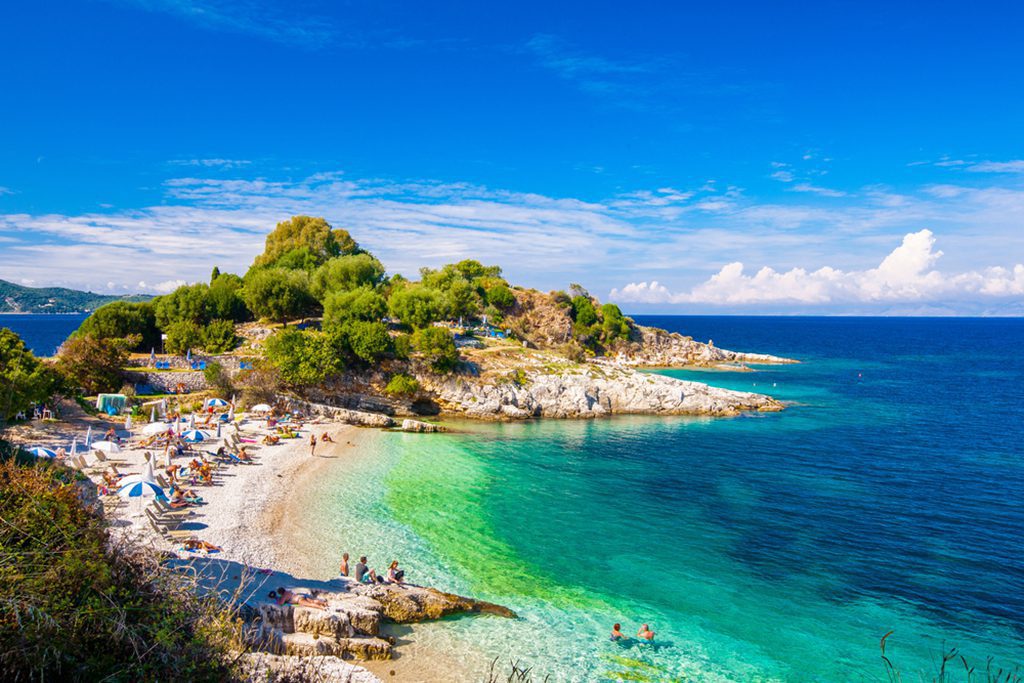
One of the most gorgeous and verdant of the Ionian Islands is Corfu. Since ancient times, people have been flocking there on weekends, and this trend continues now. Many people who visit are on package vacations. Corfu is one of the most accessible Greek islands because of its convenient location near Athens and its convenient international airport.
Corfu’s allure lies in the fact that it caters to a diverse range of visitors. The historic district of Corfu Town is a mosaic of Greek, Italian, French, and British influences.
Palaiokastritsa, known for its stunning blue bay and interesting monastery, is one of the most popular destinations, while Sidari is home to a fun theme park perfect for families, and Kassiopi is known for its lively nightlife.
4. Rhodes
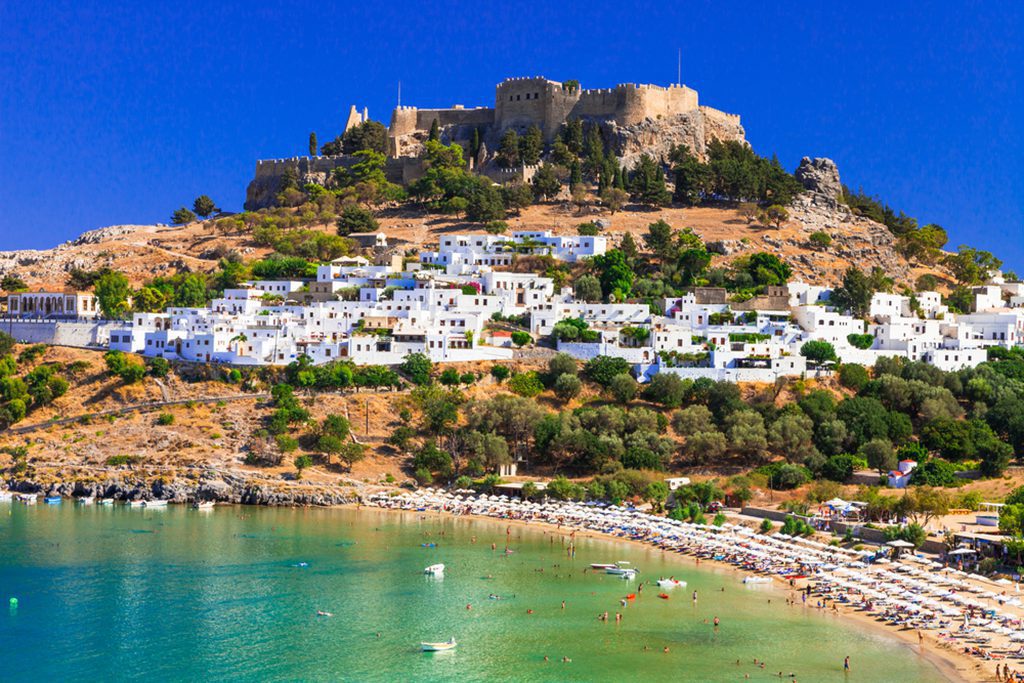
The biggest island in the Dodecanese archipelago and the ancient capital is Rhodes, sometimes known as “the Island of the Knights.” It is also one of the most visited islands in Greece. Ancient historical ruins, modern beach resorts, and world-class windsurfing facilities all contribute to the area’s stellar reputation.
With sunlight lasting until late November, the island has the longest summer of any Greek island. However, the throngs of tourists start arriving as early as April, drawn by the promise of warmer weather. To be fair, it’s hardly shocking once you take in everything that Rhodes has to offer.
When you visit Rhodes Town, the island’s capital, you may wander the narrow streets of the walled Old Town, which was constructed by the Knights Hospitaller in the 14th century and is now a cobblestone (and frequently packed) labyrinth. The magnificent former Palace of the Grand Masters is now a museum, and the nearby Street of the Knights is a popular tourist destination.
Rent a vehicle and go into the island’s forested interior to escape the summertime hordes that flock to Rhodes. Monólithos, Kritina, Thárri, Asklipió, and yios Yeóryios Várdhas all have magnificent castles and churches that are worth seeing. The Valley of the Butterflies and the Acropolis of Lindos are two more must-sees.
3. Crete
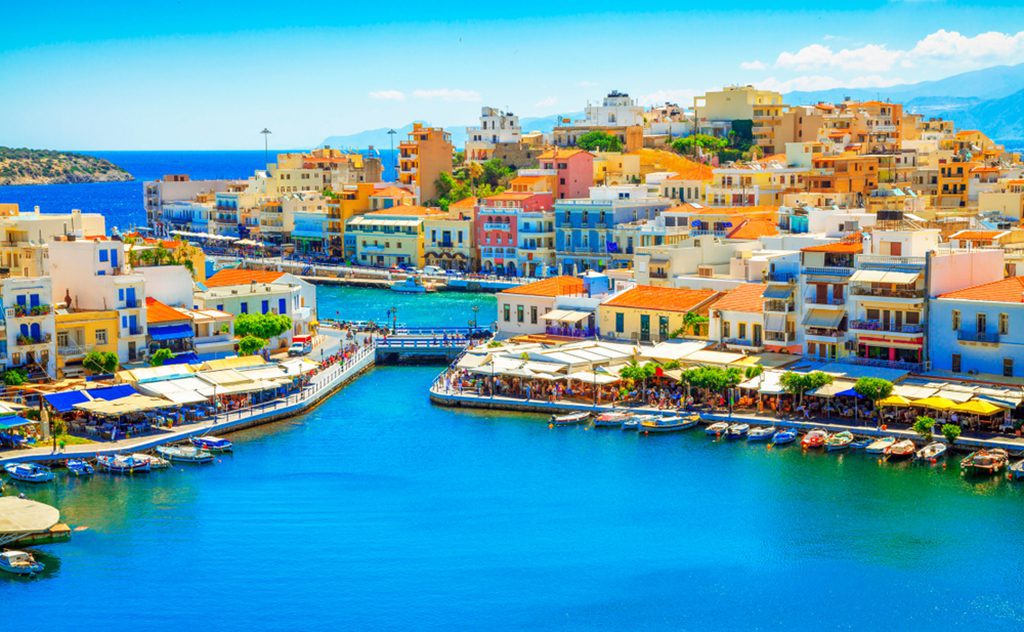
In addition to being Greece’s biggest island, Crete has one of the Mediterranean’s longest summers. This is a great place to spend a sunny vacation till around the middle of October. Crete’s Minoan civilisation, Europe’s first, dates back to about 2500 BC, and its culture and history are intriguing.
Crete now has three airports, making it easy to get there. It caters to all kinds of vacationers by providing an exciting nightlife at party resorts, mouthwatering cuisine for foodies, exciting excursions for adventurers, and tranquil countryside for those in search of solitude.
There are gorgeous beaches, historic caverns, snow-capped mountains, and quiet Cretan towns to explore on this island. See the fascinating blend of Renaissance palaces, Islamic mosques, Turkish baths, and Byzantine churches, chapels, and monasteries. Located near the ancient Minoan monuments of Knossos, Phaestos, and Aya Triádha, the capital city of Heraklion is also home to the Heraklion Archaeological Museum.
Crete is a foodie paradise, with many taverns producing their own cheeses, meats, olive oils, raki, and wine. Crete is a great place to do rock climbing, mountaineering, and rappelling, and it also happens to have the longest gorge in Europe and the second-highest bungee jump on the continent. Some of Crete’s other attractions are the White Mountains’ Ideon Cave and Elafonisi Beach (said to be the birthplace of Zeus).
2. Mykonos
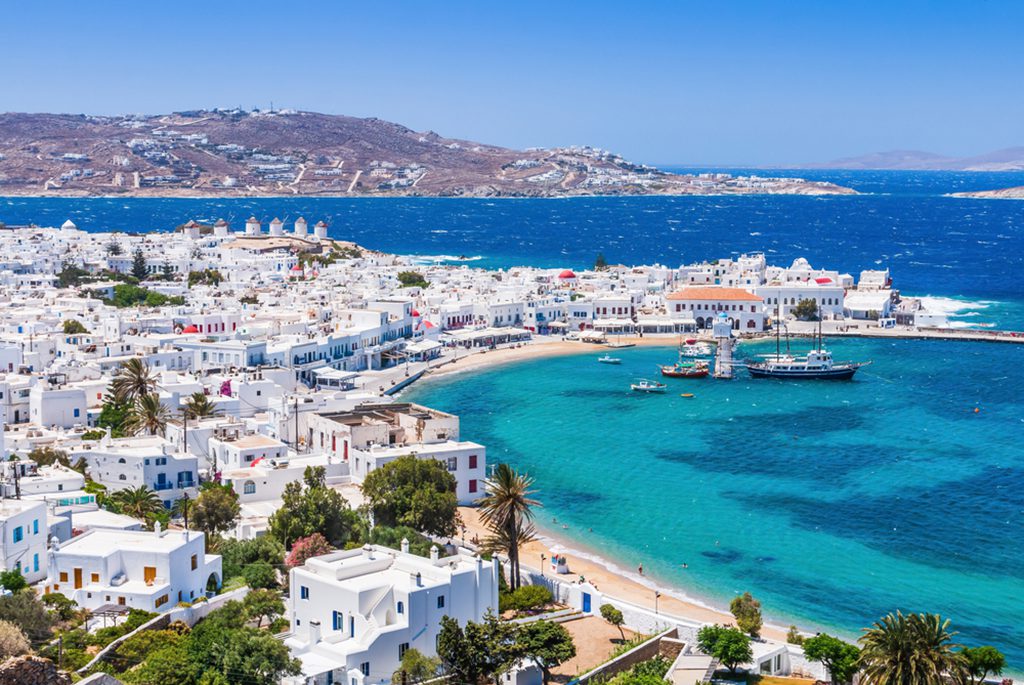
Among the Greek islands, Mykonos is the most well-known for its trendy nightlife and international guest population. Furthermore, it is one of the most costly because of its preeminent Ibiza-like status in the tourist industry. However, beach bums, history lovers, party animals, and those seeking stunning sunsets may all find what they’re looking for on the island of Mykonos.
Bougainvillea was used to decorate the Cycladic architecture that abounds in Mykonos Town, which is characterized by its whitewashed buildings with blue doors, its windmills, and its secretive churches, shrines, and chapels. Wander the twisting lanes that were reportedly constructed to thwart the 18th century’s would-be pirates and now are home to an archaeological museum, a maritime museum, and a folklore museum.
Mykonos Town has retained its character despite the proliferation of tourist traps such as boutiques, art galleries, cafés, bars, and restaurants that line its streets. Mykonos’s original Cycladic architecture and spirit have survived thanks to the island’s stringent construction laws.
Visit Paradise Beach or any of the other exciting beach clubs if you’re looking for a good time. You may also relax after a day in the sun by browsing the shops in Mykonos Town.
1. Santorini
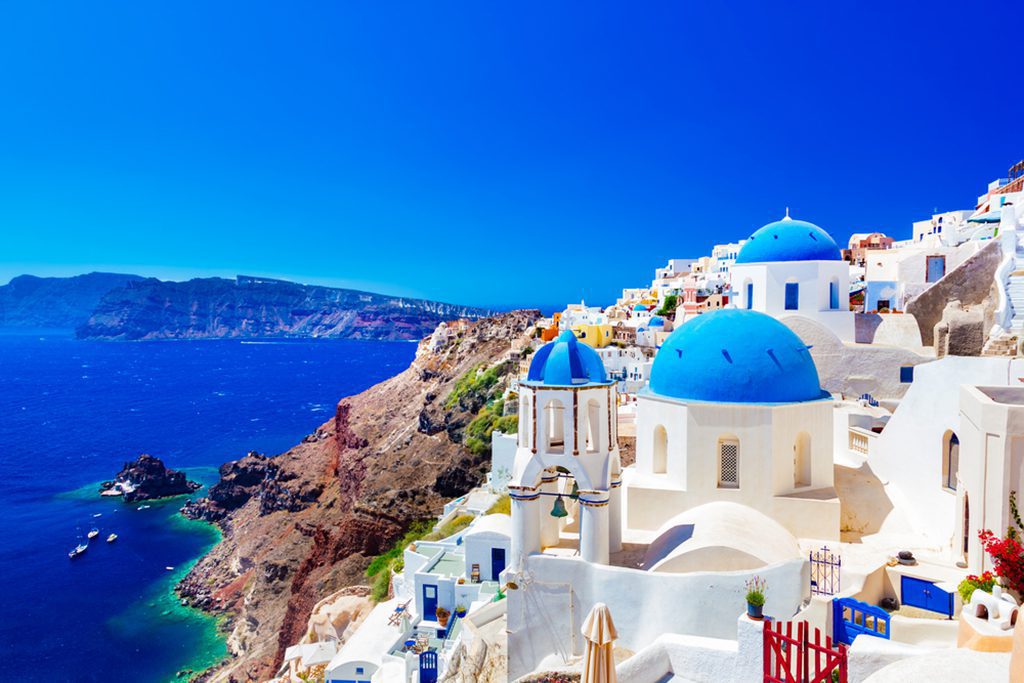
Santorini, the island that springs to mind first when you think of Greece, is nothing short of enchanted. Santorini, the biggest of a tiny island in the Cyclades, has the stereotypically Greek whitewashed structures, but its two major towns, blue-domed Oia and capital Fira, teetering on the cliffs above a buried volcano give some of the greatest vistas in the Mediterranean.
Even though Santorini is one of the most expensive islands in Greece and a real playground for the affluent and famous, you don’t need a lot of time there to appreciate its beauty. The world-famous sunsets and upscale vineyards, though, make it an absolute must-do.
Spend your vacation window shopping at Santorini’s chic shops; exploring the island’s breathtaking caldera clifftops on foot; and relaxing on the island’s white, black, and red volcanic pebble beaches. There is a cable car that departs from the dock, or you may ride a mule up the 588 winding stairs to the top.


